1lumen selects and reviews products personally. We may earn affiliate commissions through our links, which help support our testing.
NlightD L1 review
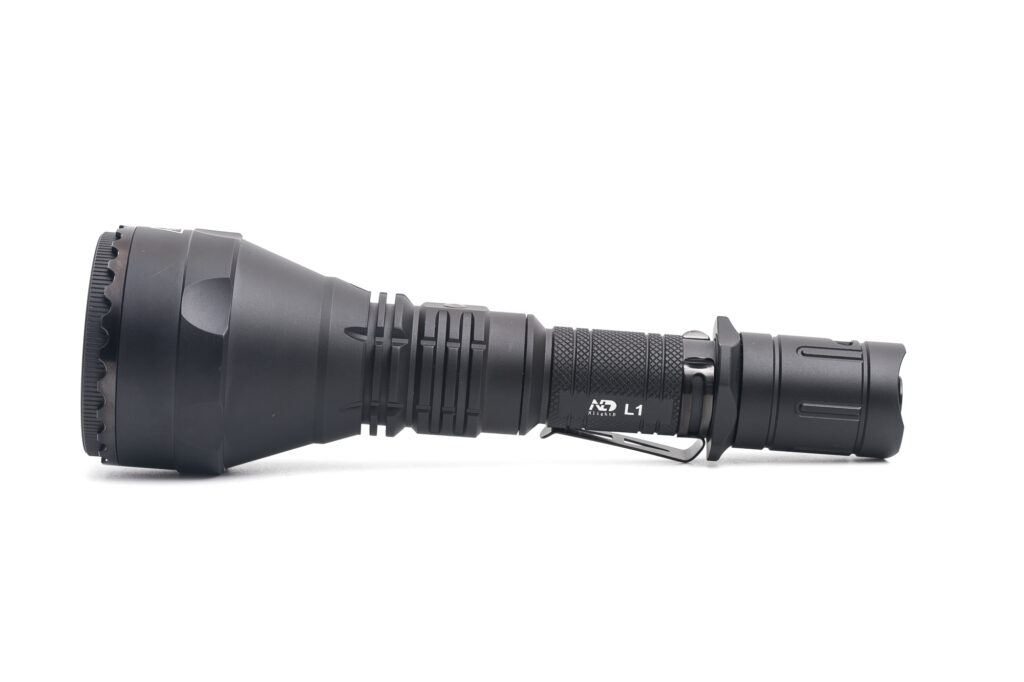
NlightD L1 specifications
| Brand/model | NlightD L1 |
|---|---|
| Flashlight category | LEP / long-range |
| LEP | Mirror-type module |
| Max. output | 500 Lumens |
| Max. beam distance | 2,408 meters |
| Max. beam intensity | 1,449,616 cd |
| Battery config. | 1*21700 |
| Onboard charging | N/A (built into battery) |
| Modes | 2 |
| Blinkies | N/A |
| Waterproof | IPX8 (100 meters) |
| Review date | November 2022 |
Introduction:
LEP flashlights are long-range flashlights with very narrow beams. And within this group of flashlights, there have been a few icons, so to say. And one of those icons (because it was one of the first with so much reach) was the Acebeam W30.
Or course, we reviewed the Acebeam W30, and albeit a very good flashlight, it lacks a bit in performance compared to the more recent LEP flashlights (Laser flashlights). I measured it at 1,312,000 cd instead of the claimed 1,450,000 cd. That’s still not bad at all, and still very close. But these days, many other offerings do much better.
Anyway, why am I referring to that particular light so often? Maybe because this is the unofficial successor, made for Nealsgadgets, and is called the NlightD L1.
If you don’t trust me, I hope this review will…
btw. This is Neal’s second LEP flashlight, but the first NlightD branded.
Package quality.
Neal has sent the L1 for early testing, so there was no box included or anything. Just the light with the battery installed. But when the packaging is ready, you should get the following:
- The flashlight: NlightD L1
- 21700 USB-C battery
- USB-C charging cable
- White diffuser lens
- Lanyard
- Removable clip (pre-installed)
- O-rings
- Manual
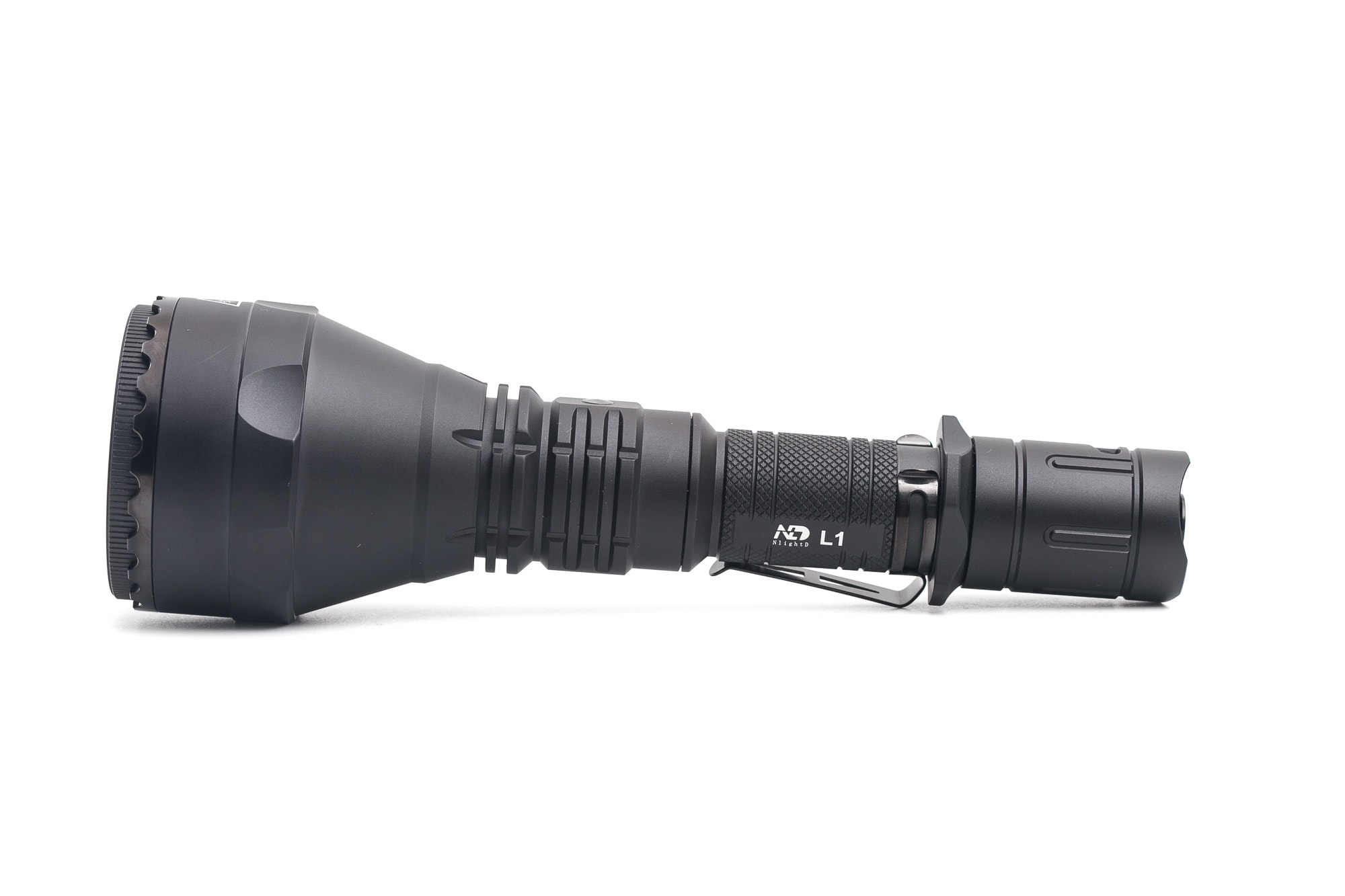
Flashlight in use
It was a bit amusing to see the NlightD L1 with pocket clip attached. I’m sure some people want to use one, but it looks a bit odd on this type of flashlight. The head is so much bigger than the battery tube, that the clip will feel a bit unnatural. But don’t worry, you can still use the lanyard included, or get yourself a holster, if you prefer that.
It uses a single switch, which is located in the tailcap. It’s a forward clicky switch. This means, that you don’t need to fully click the switch to turn the light on, albeit temporarily. A full click will turn it on continuously.
This means that you either have to operate it with both hands when using the underhand position. But in the overhand position (tactical style), you can rest your thumb on the switch, and operate it single-handedly.
There’s enough knurling on the battery tube, and lots of machining on the head as well, so it doesn’t feel slippery in any way. And on top of that, there is a tactical ring installed in front of the tailcap makes it slipping out of your hand almost impossible. The same ring is the place you attach the lanyard to, and functions as your anti-roll feature. However, there is also a small hole in the tailcap, that you can use for the lanyard.
And 1 more thing I like about the L1, is the tripod mount. Not many LEP flashlights have this, but it can be so useful. With the use of a tripod, you can focus the beam on something really far, and keep it really still. The longer the distance, the more difficult it is to keep the beam focused on 1 spot. And that’s one thing that makes it stand out a bit more.
Oh, and before I forget, Neal includes a frosted lens, which works as a diffuser. Great idea, to turn your LEP flashlight into a ‘normal’ flashlight with a much wider beam. The L1 can even tail stand, to make it even more useful. So, there’s many ways you can use it.
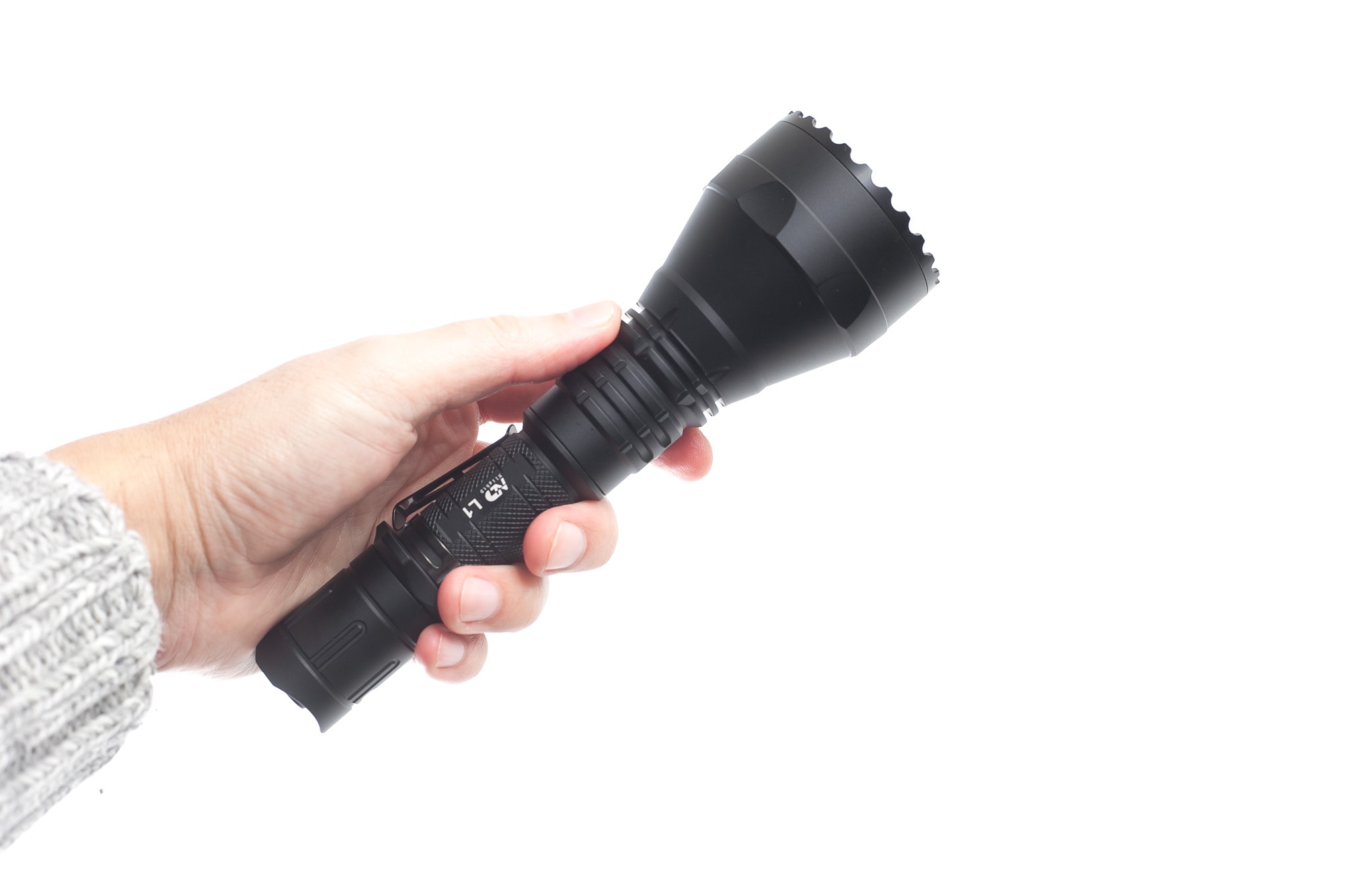

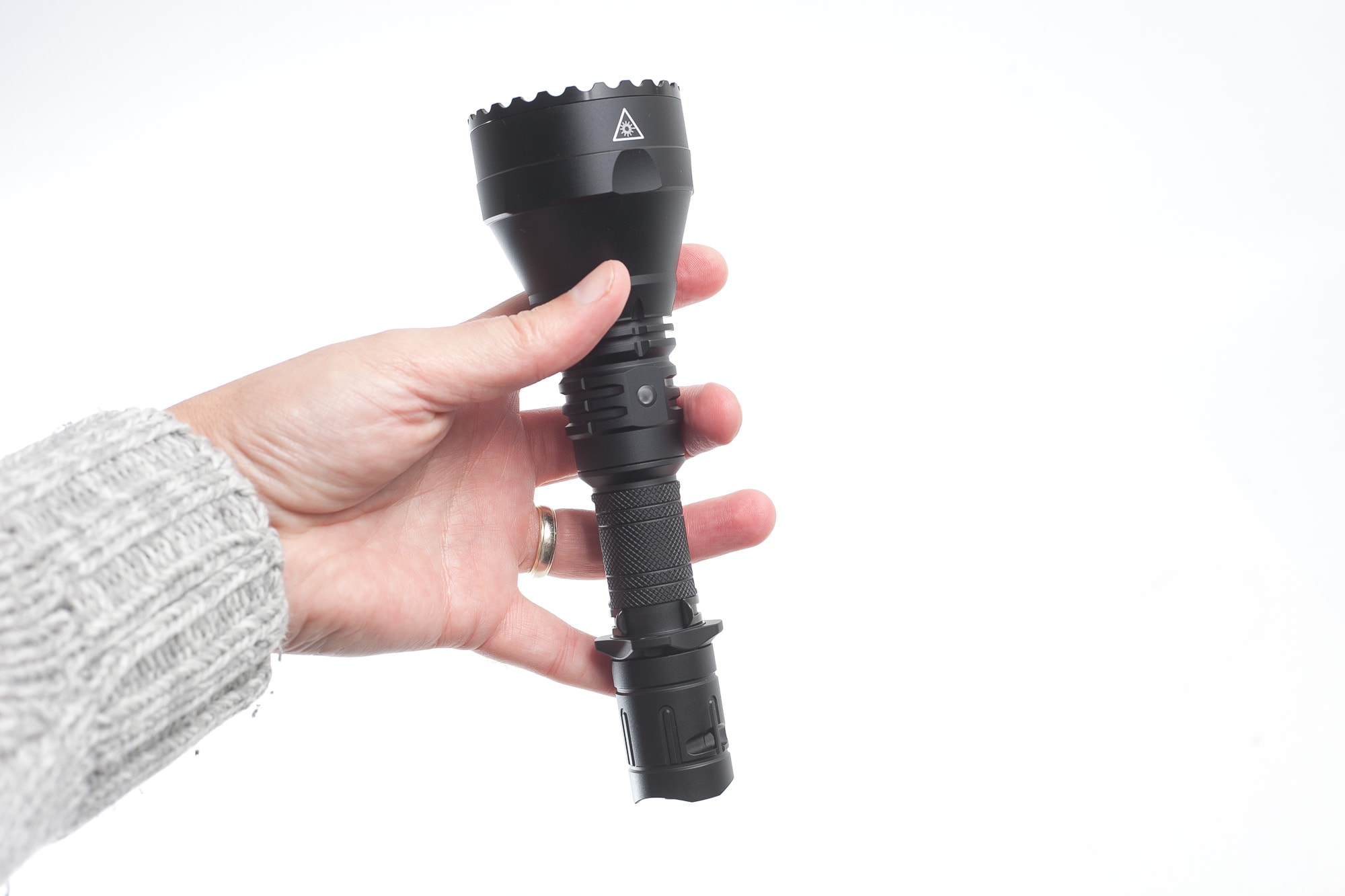
Build Quality, and Warranty
The build quality looks and feels like any other Acebeam flashlight. From the machining to the type of anodizing, it looks and feels good.
The anodization looks good all over the flashlight without any defects. It is black, and has a matte finish, without being too sensitive to fingerprints. And even the tailcap threads are anodized. This is great, so you can easily break the electric circuit by unscrewing the tailcap, to stop the light from any parasitic drain.
But, mine doesn’t have any glue on the battery tube, and when trying to unscrew the tailcap, the battery tube unscrews from the head. The threads + o-rings near the head are smoother than the threads near the tail. It’s possible that the battery tube threads, near the head, will be glued on the mass-production samples. But if not, you can always add a tiny bit of Loctite to secure the head, so you don’t accidentally unscrew it.
Well, in theory, that is, because, in reality, the tail switch is a forward clicky switch, so you don’t need to unscrew the tailcap as a lockout. I mean.. it can be helpful to protect against accidental activation, but there won’t be any parasitic drain anyway.
Warranty:
This is taken from the manual:
Guarantees the flashlight against defects in material and workmanship. Flashlight products that are found to be defective under normal use within 1 year of the period of purchase date will be repaired or replaced without charge. This warranty does not cover damage caused by accident, unreasonable use or product alteration. Failure to follow the general maintenance directions could result in damage to your flashlight that may not be covered by warranty. Should this flashlight be proved defective, the product will be repaired or replaced under the above terms.
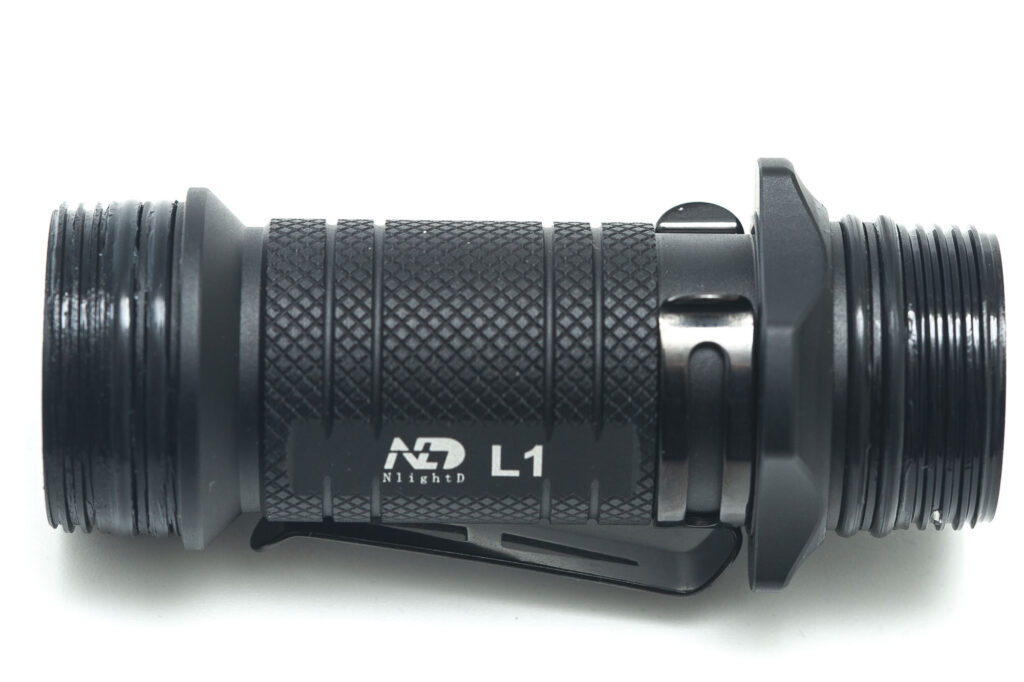
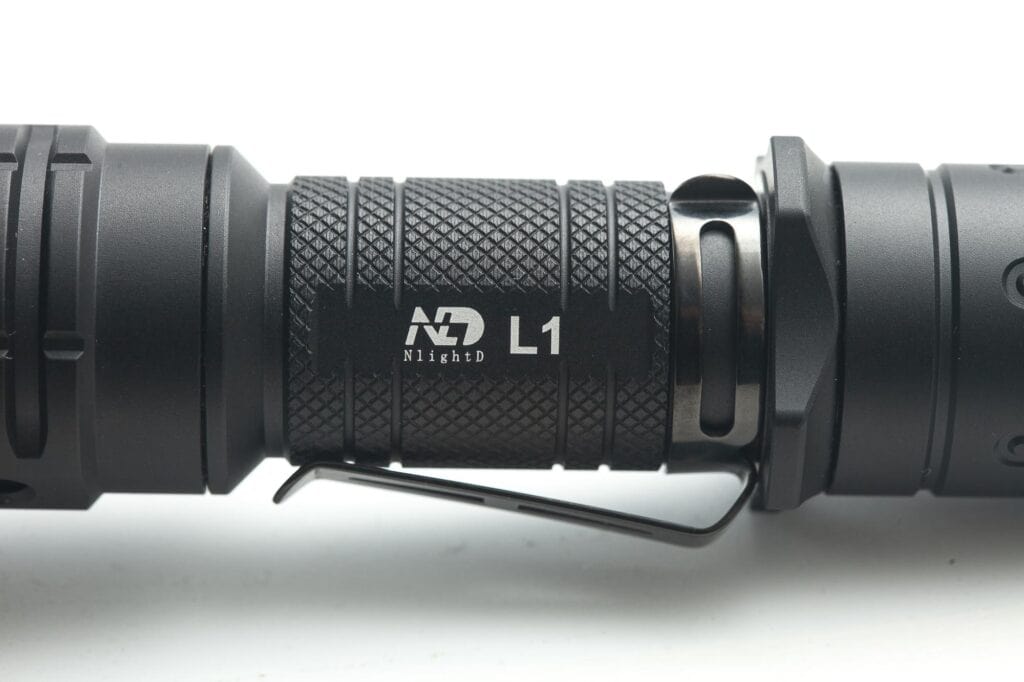
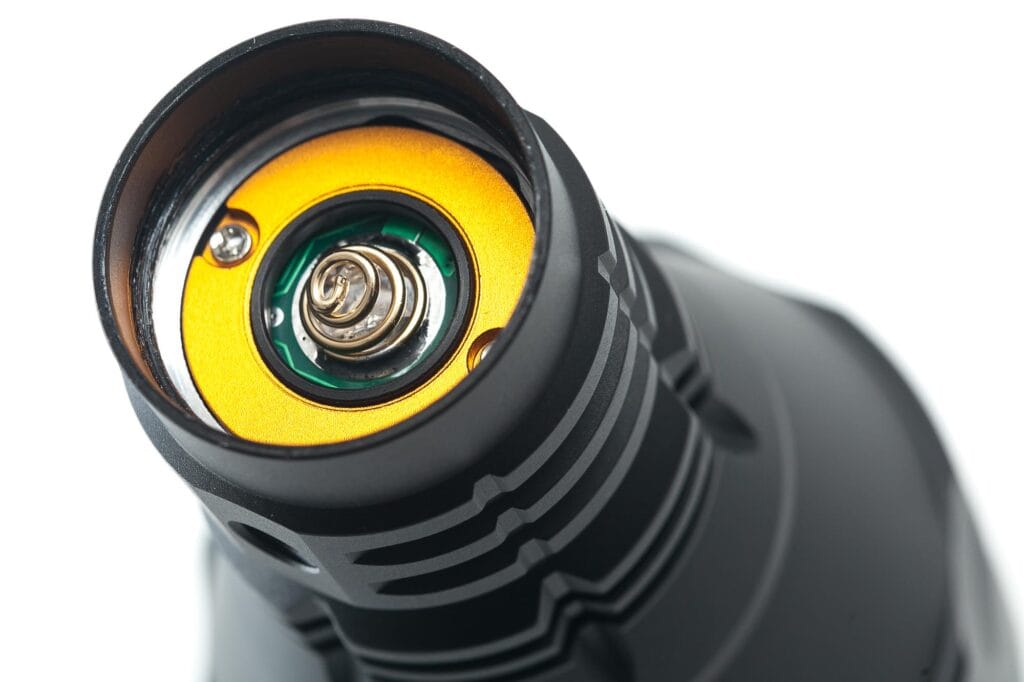
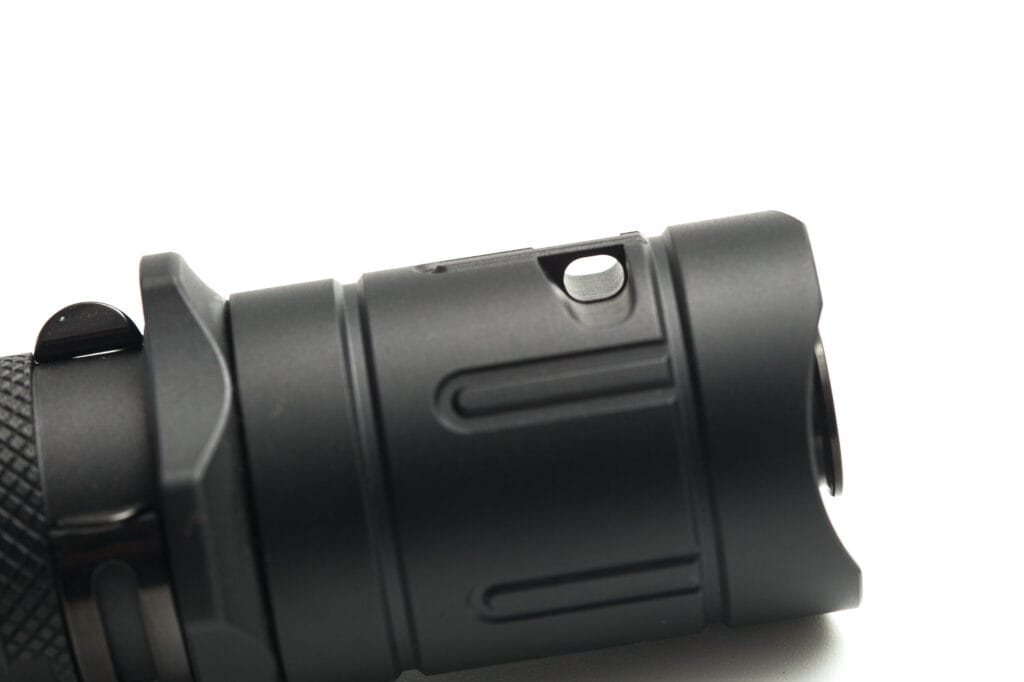
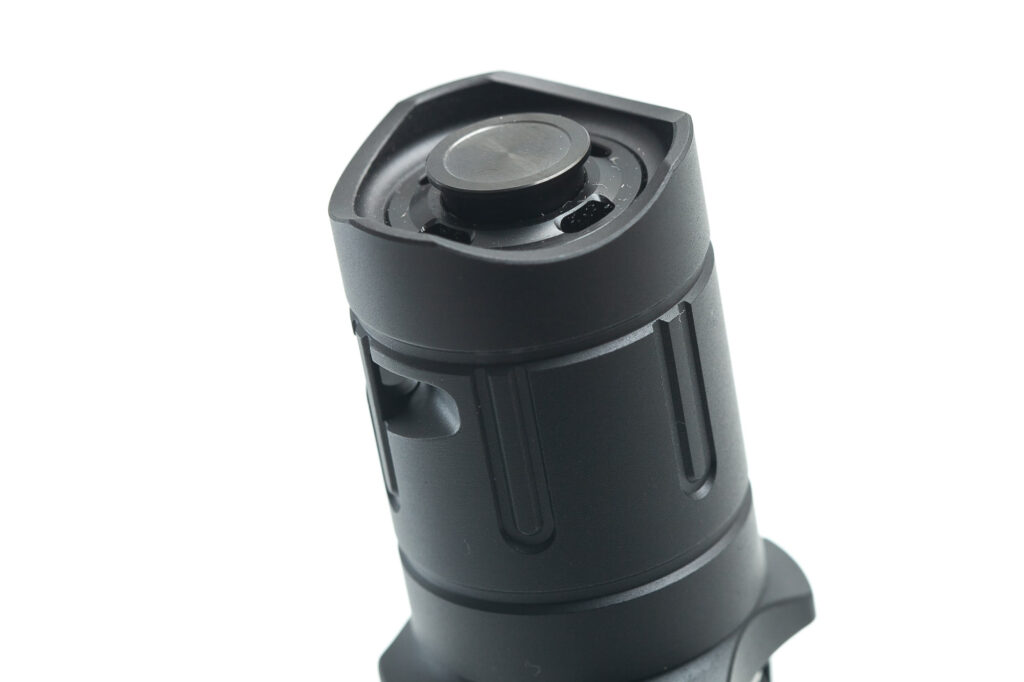
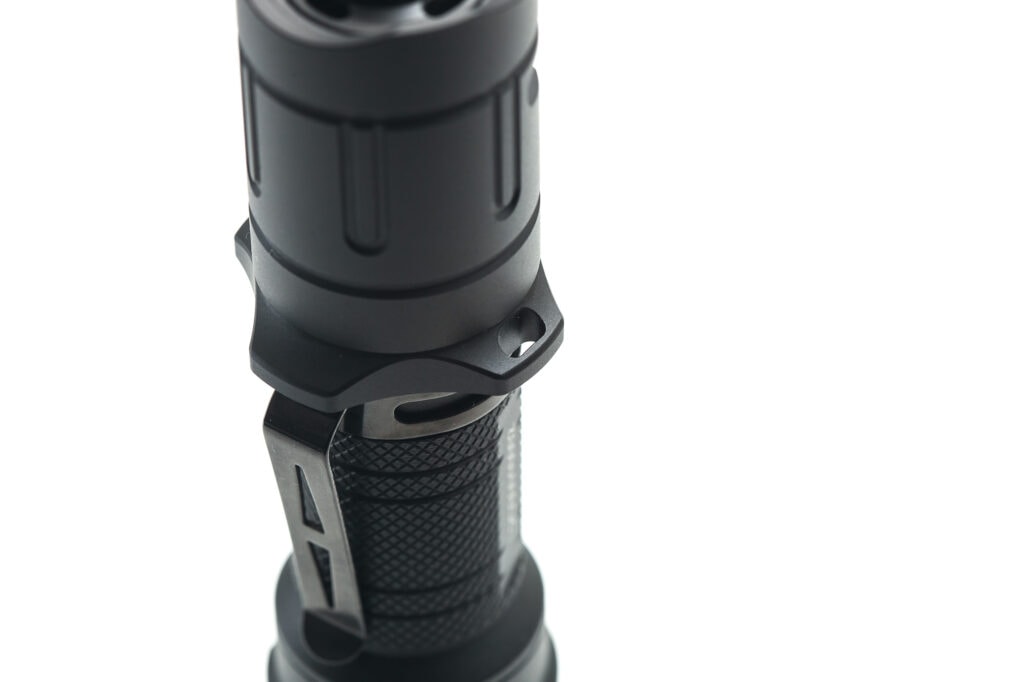
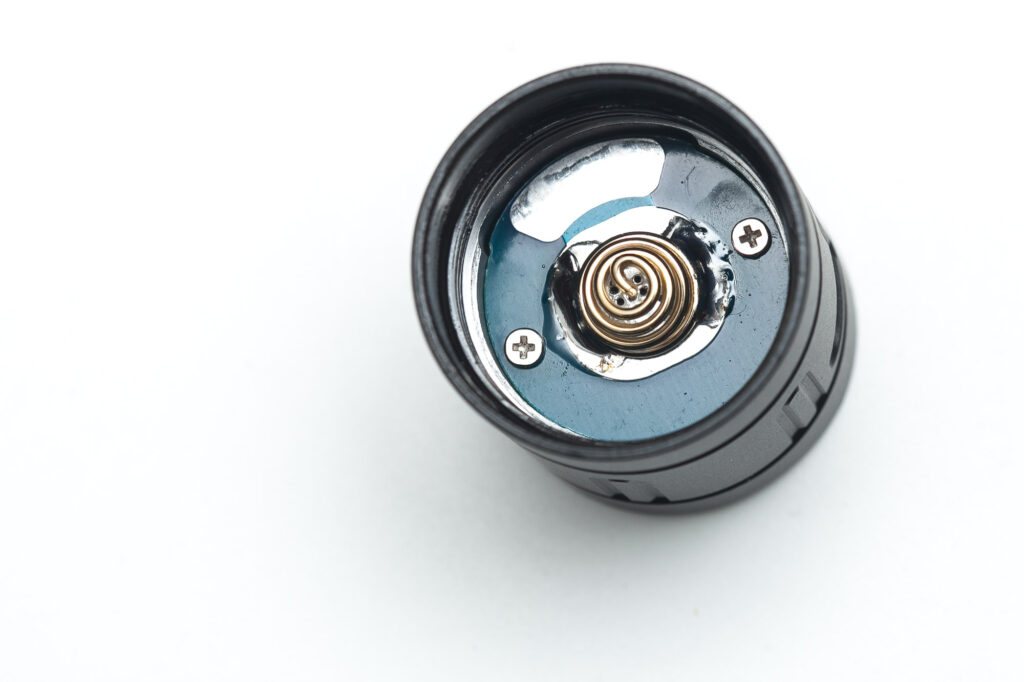
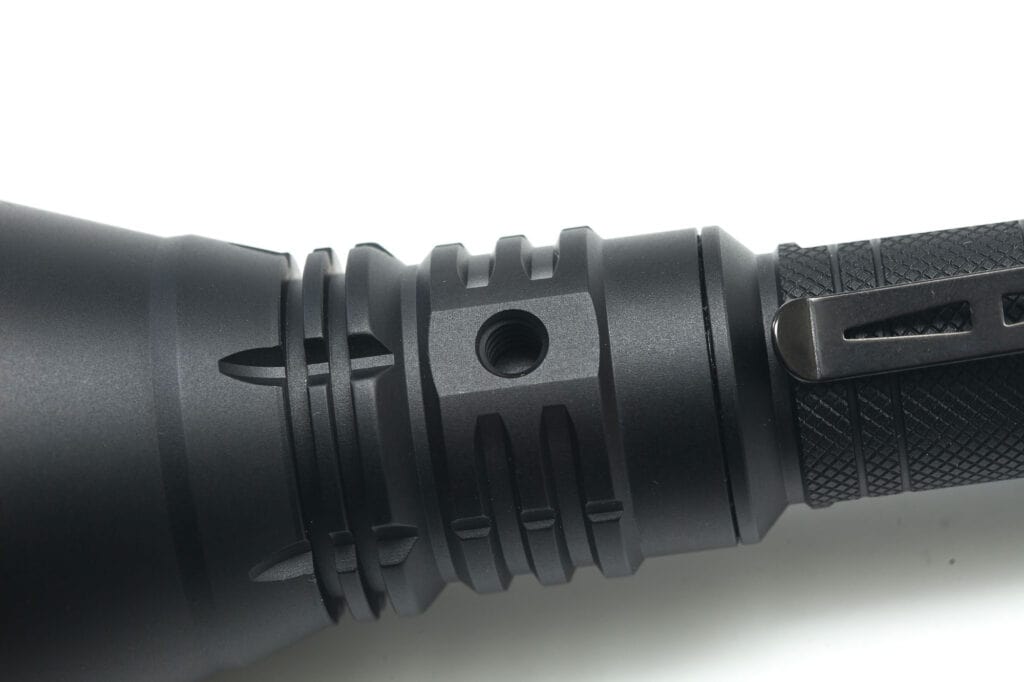
LEP, Lens, Bezel, Beam, and Reflector
LEP flashlights are different than LED flashlights. So don’t think you will get a pretty high CRI beam, without artifacts. The L1 uses a mirror type LEP module, that gives the best reach, but at the cost of subpar beam quality. This is not always they case though. The Acebeam W30 has the same kind of module, but has a pretty nice beam. You can see it in this video: https://youtu.be/6jmPsEAc_d8
The LEP module is very hard to photograph through the front lens.
The front lens protects the convex lens, has purple AR coating, and is protected by a pretty aggressive bezel. The bezel feels pretty sharp, but it doesn’t cut my fingers, fortunately.
One more thing I like about this light is the screw-in frosted filter that is included. This is basically a diffuser, to change a very narrow yellowish LEP beam into a wide beam. It doesn’t perfectly remove the ‘throw’ of the beam, because there is a very, very small hotspot visible, with rainbow colors, lol. Please see the beamshots below.
Without the diffuser, you have a very narrow, intensely focused beam, with some tint shifts, but still very usable.
I haven’t tested the CRI or CCT, because it’s not too useful at this point. Plus, my Opple Light Master would have a hard time, and the light will blow out the sensor.
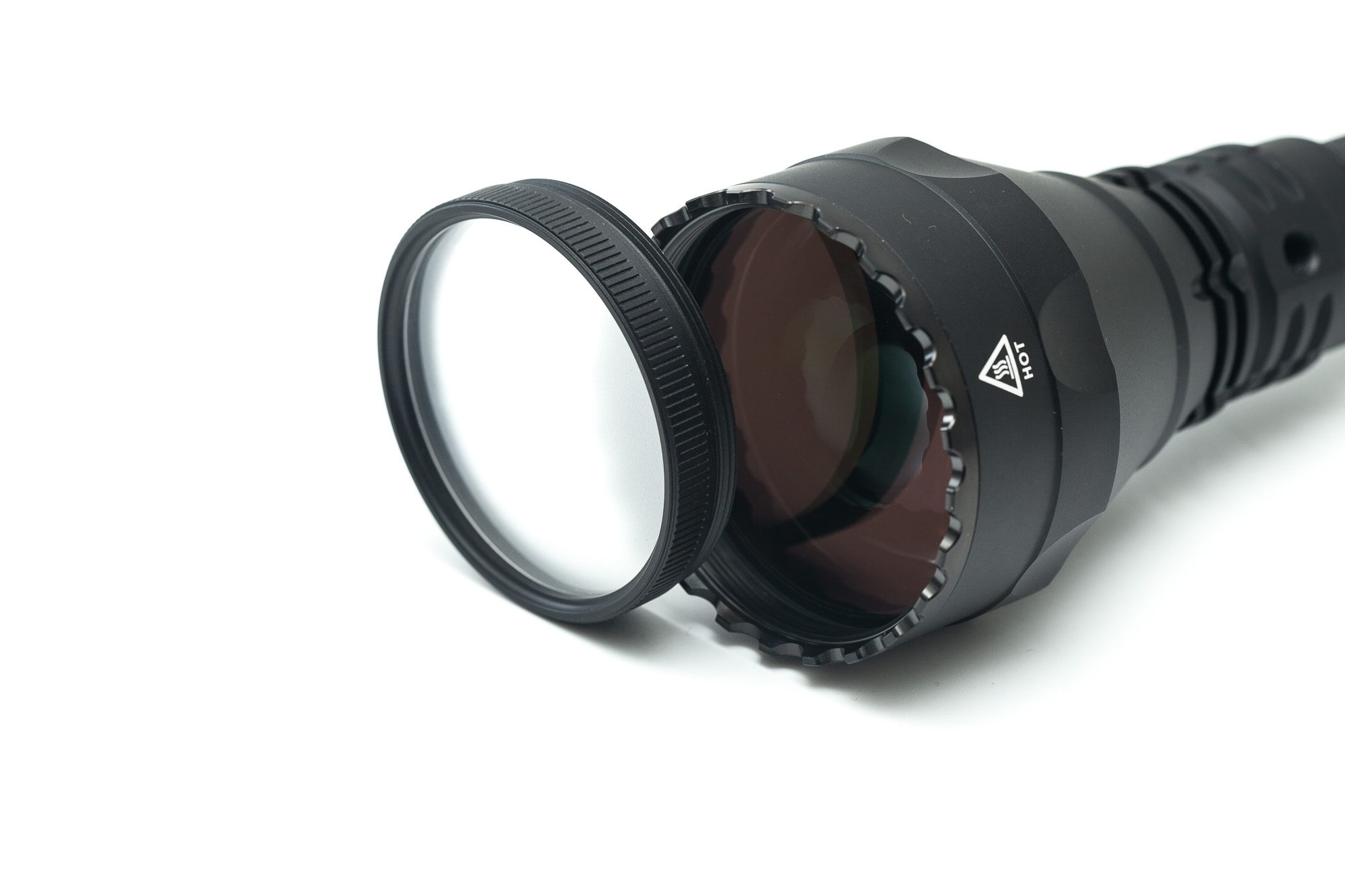
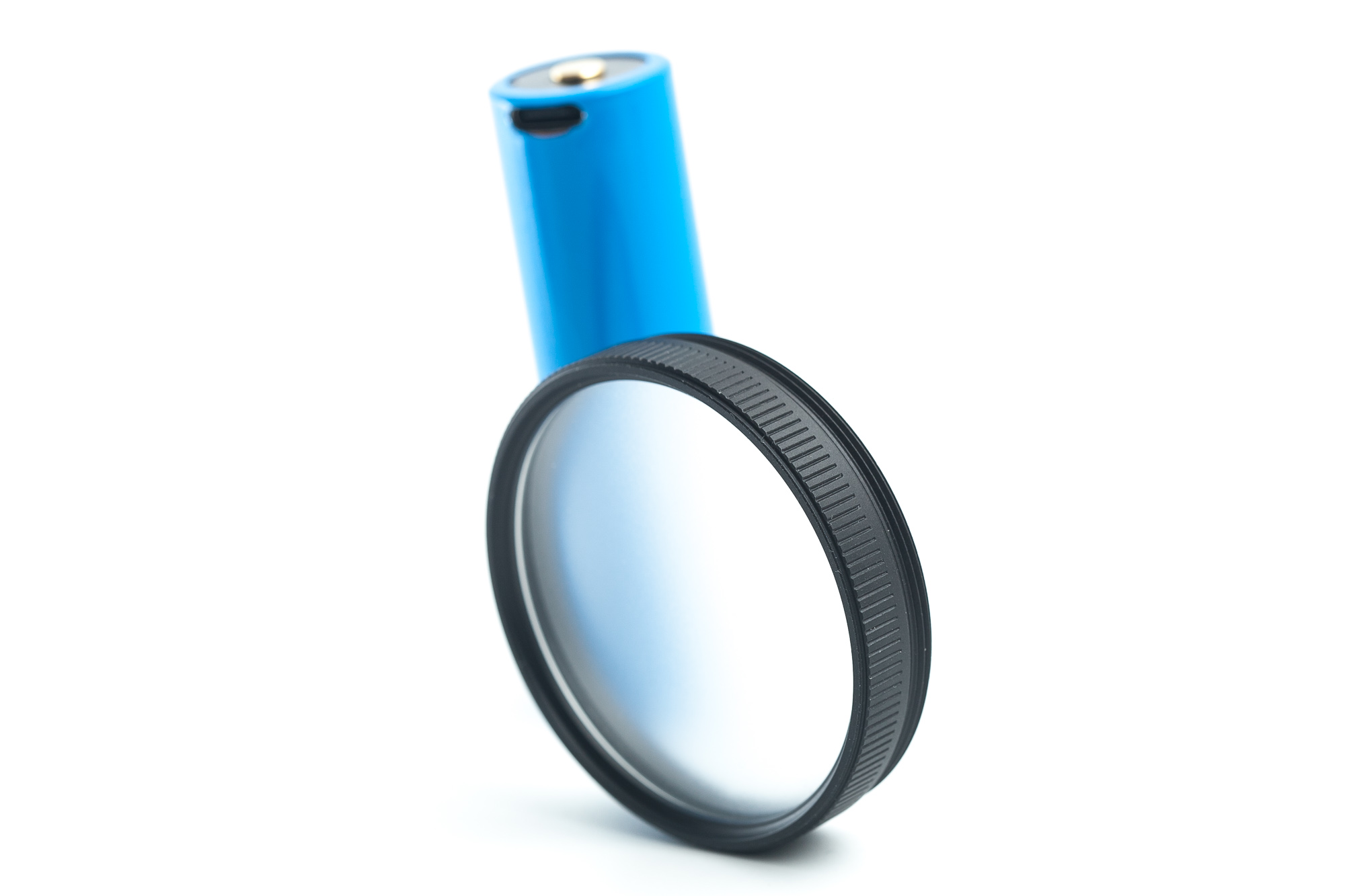

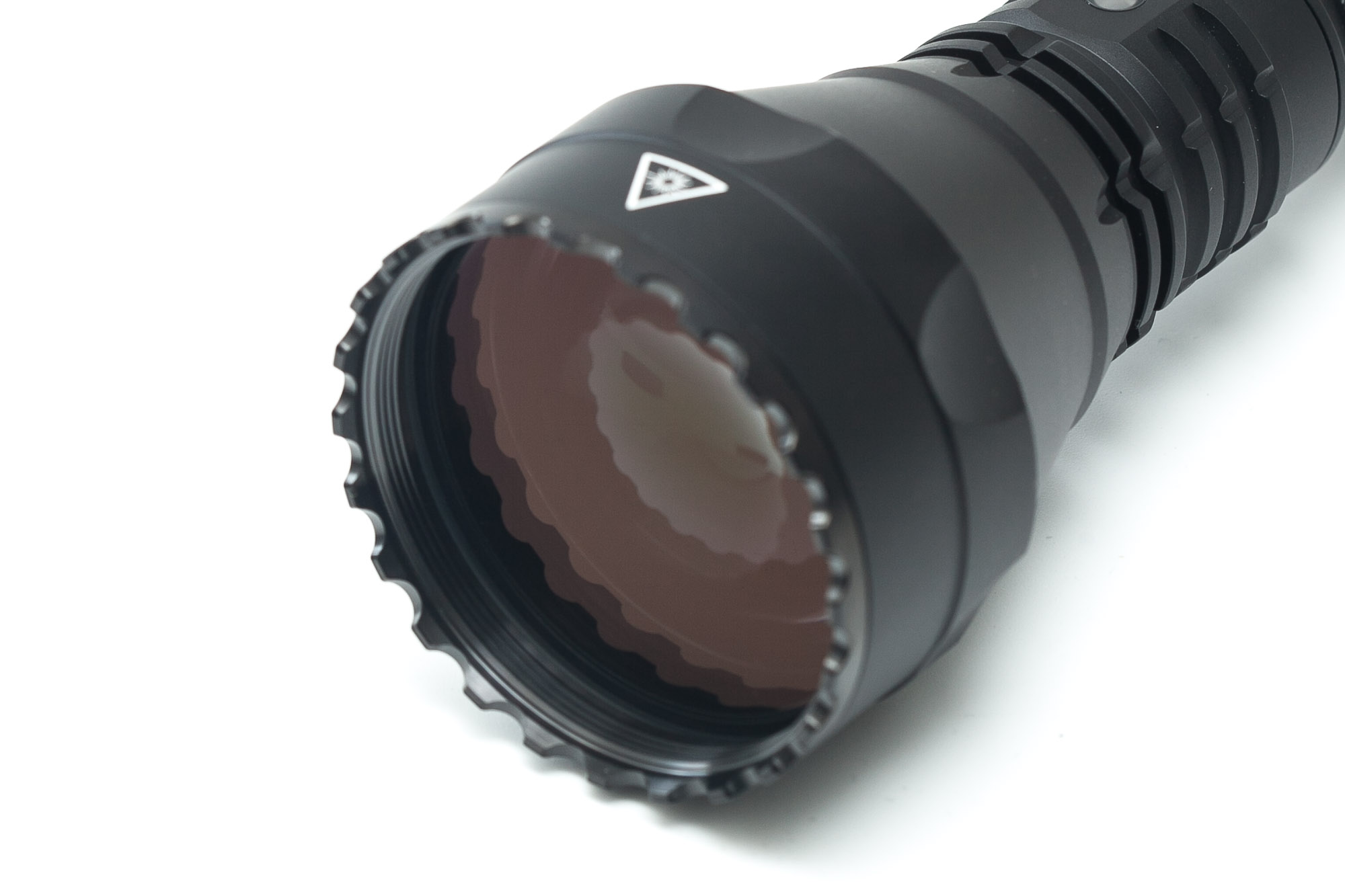
Dimensions and size comparison
Dimensions:
| NlightD L1 dimension | Millimeters | Inches |
|---|---|---|
| Length | 197 mm | 7.8″ |
| Bezel diameter | 60 mm | 2.4 “ |
| Wides head diameter | 61 mm | 2.4″ |
| Body diameter | 25 mm | 1 “ |
| Tailcap diameter | 29 mm | 1.15″ |
Dimensions are rounded to the nearest millimeter, and to the nearest tenth of an Inch.
Weight:
| NlightD L1 weight | Weight in grams | Weight in oz. |
|---|---|---|
| Without battery: | 266 grams | 9.4 oz |
| With battery | 345 grams | 12.2 oz |
Weight is rounded to the nearest gram, and to the nearest tenth of an Oz.
LEP flashlight comparison
Size compared to other LEP flashlights
Group 1, from left to right (and in zigzag pattern): Amutorch BT60, Lumintop Thor 3, Maxtoch L2Ks, Netorch T20L, Jetbeam M1X WP-RX, Astrolux WP2, Jetbeam RRT M1X Raptor, Astrolux WP3, Weltool W4, Weltool W4 PRO, NlightD L1, Weltool W30.
Group 2: all LEPs
Group 3: W30 vs L1
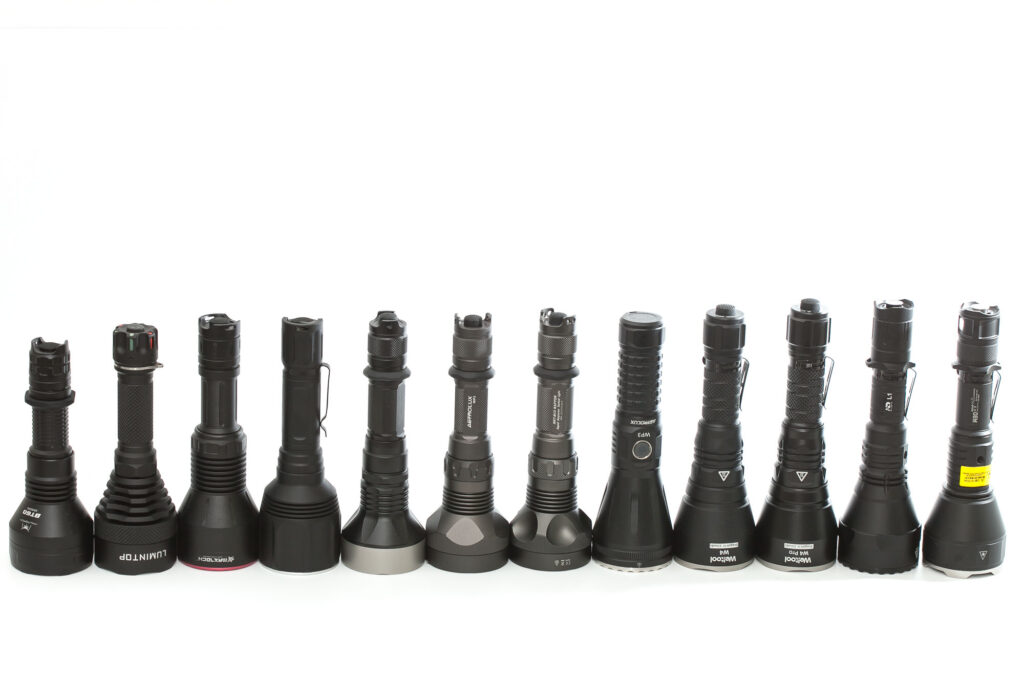
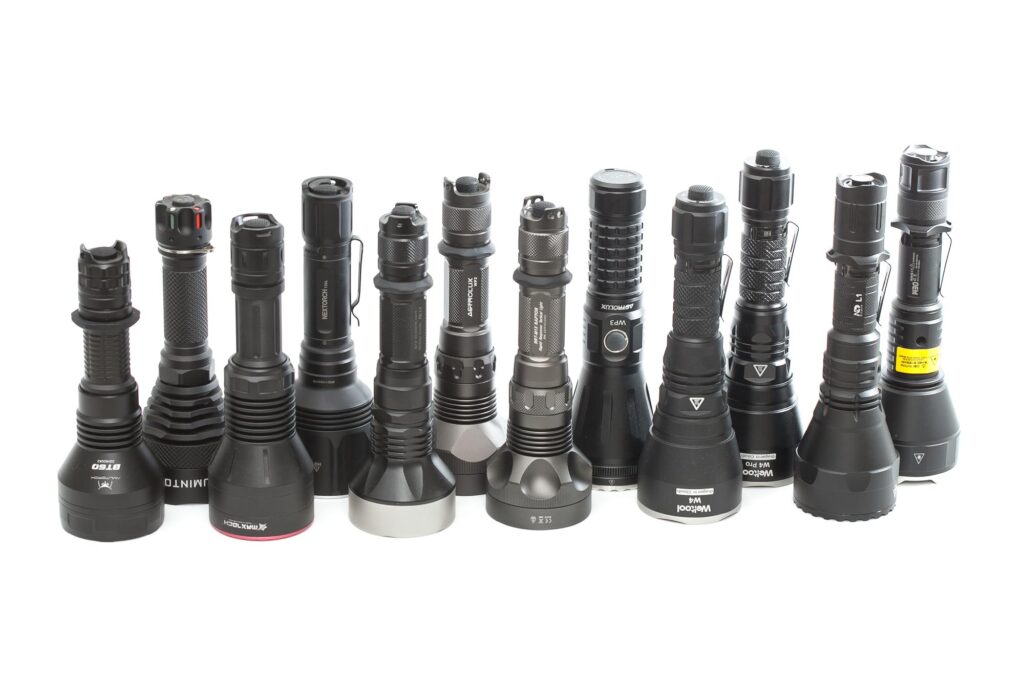
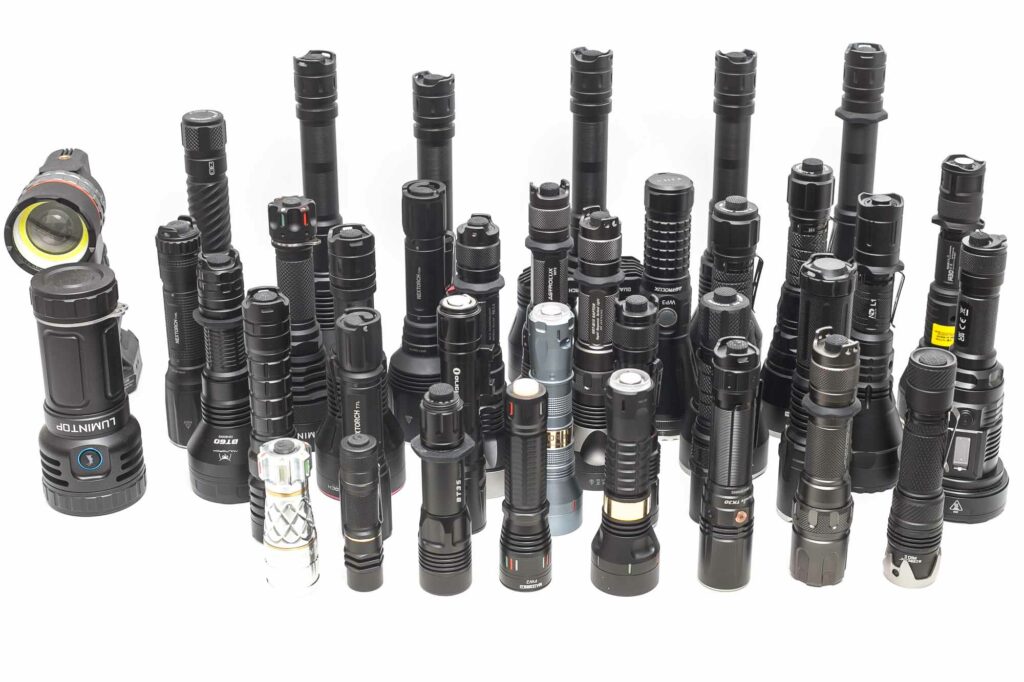
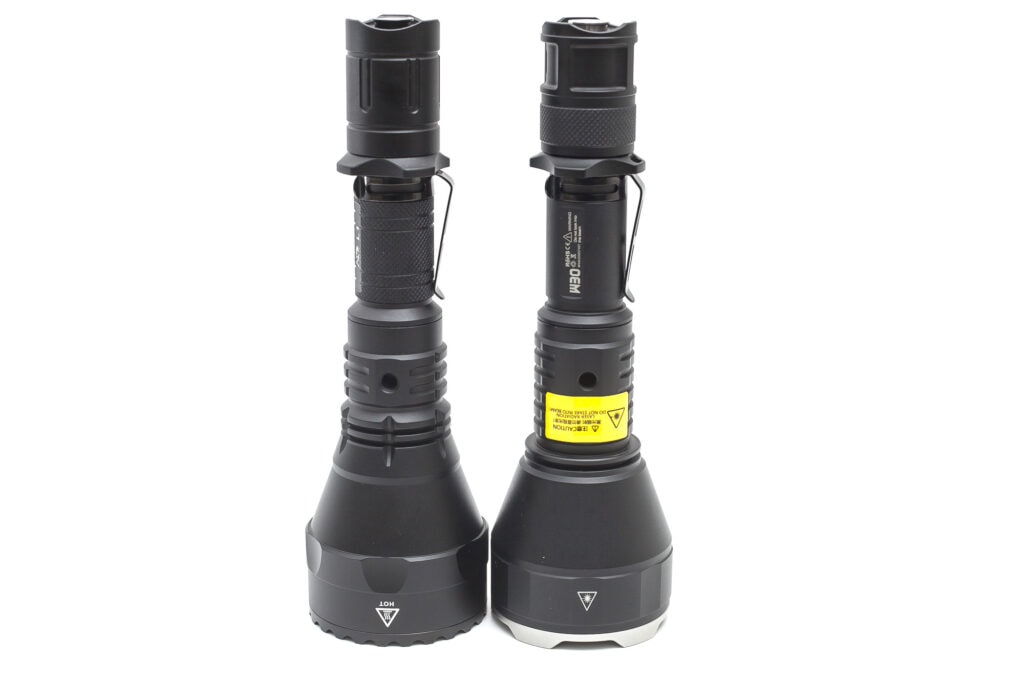
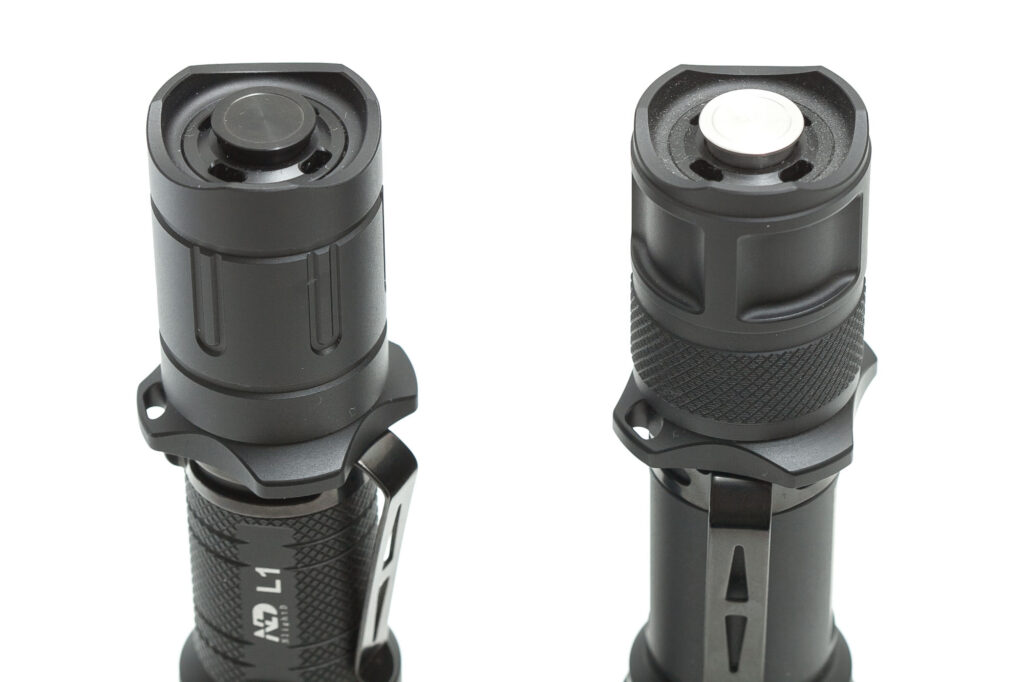
Driver & User Interface:
Mine is the pre-mass production flashlight, so the UI is slightly different. The production model will have High-Low, instead of the Low-High on mine.
Available main modes:
- Low, High
Available special modes (blinkies):
- None
From OFF:
- Single-click: turns on in Low (with my sample. The actual L1 will start in High)
- Half-press: momentary on in Low
- Half-pressing: changing between high and low (do a full click to activate that mode)
From ON:
- Half-press: nothing
- Single-click: turns off
Shortcuts:
- None.. except direct access to low
Mode memory:
- No memory
Blinky modes menu:
- None
Low battery warning:
- There is a battery level indicator built in. It’s green when the battery is above 3V, and red when the battery is below 3V, and should be replaced/charged.
Lock-out mode:
- No, it has a mechanical switch. But you can also unscrew the tailcap slightly
PWM:
- None visible
Firmware / UI Conclusion:
My pre-mass-production sample starts in LOW, but the actual mass production lights will be High first, and then low.
Batteries & Charging
The L1 doesn’t have a charger system built into it. Instead, the package includes a rechargeable USB-C 21700 battery with USB-C port. It is said to be a 5,000mAh battery, but mine doesn’t have any specs printed on it or anything for that matter. It’s just a blue battery with a USB-C port near the positive terminal, and a small indicator LED next to the positive terminal.
It arrived at a storage voltage of 3.68V.
You can’t use non-protected 21700 batteries. They are too short and don’t make contact with both springs. You need to use long, protected 21700 batteries, with or without USB ports.
It charged fine with a USB-A to USB-C cable, as well as a USB-C to USB-C cable, but without any other charging benefits. It charges at a pretty low charge current, starts at around 0.9A, and goes up to about 1.3A. There’s a small red LED light visible, near the positive terminal while charging.
When the battery finishes charging with the USB cable, it’s at 4.14Volts and the little light turns green.
If you have a 21700 battery charger, with long bays, you can also charge the battery, till 4.20V, to get just the extra bit of juice and output.
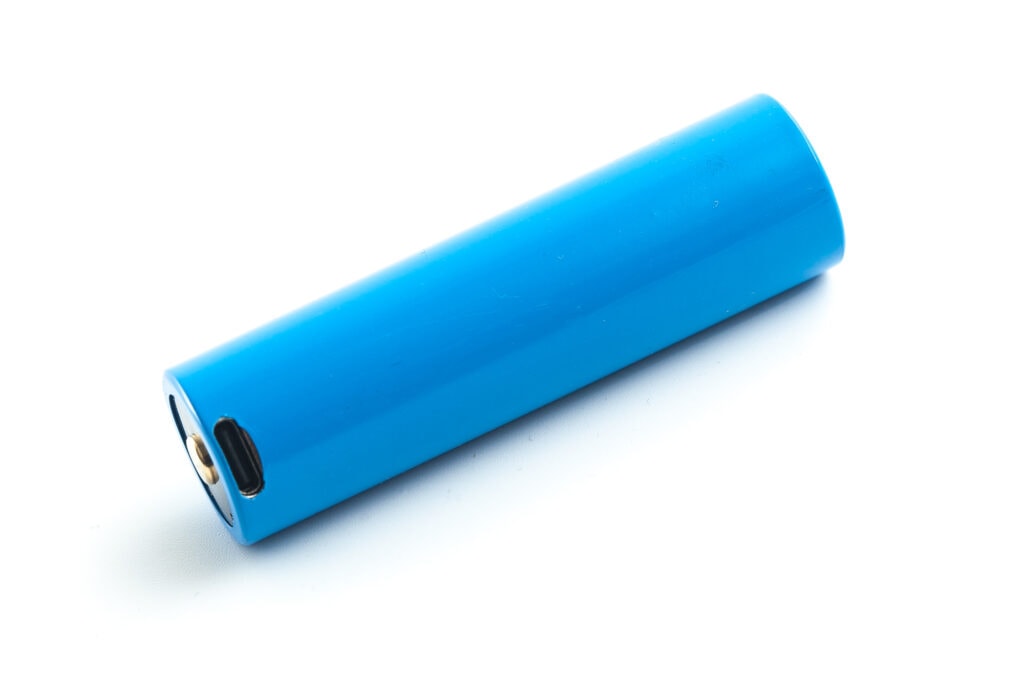
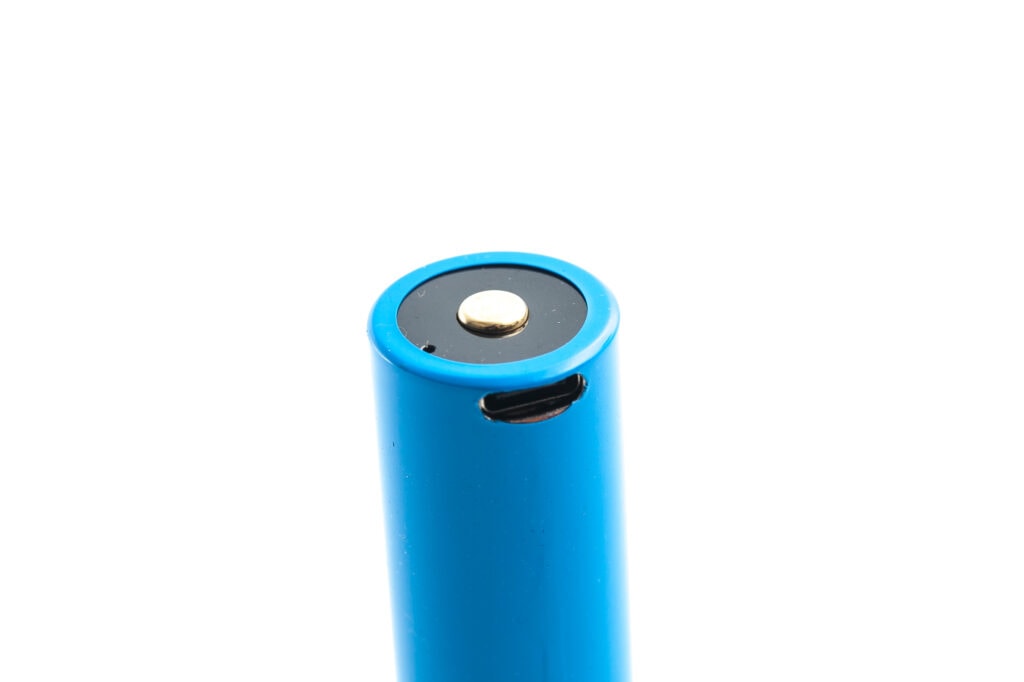
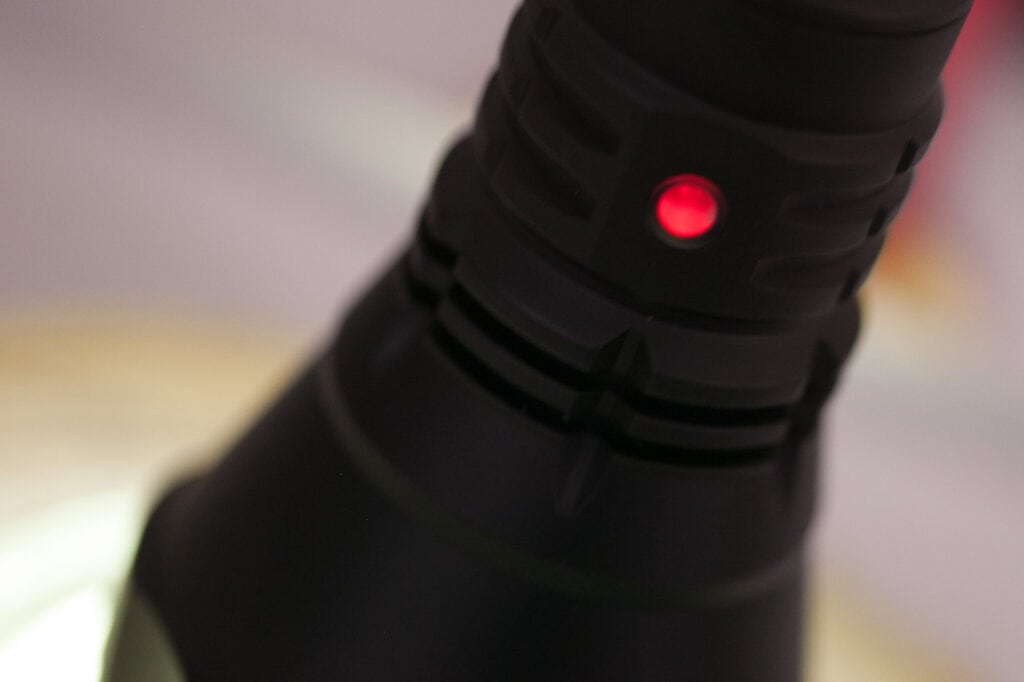
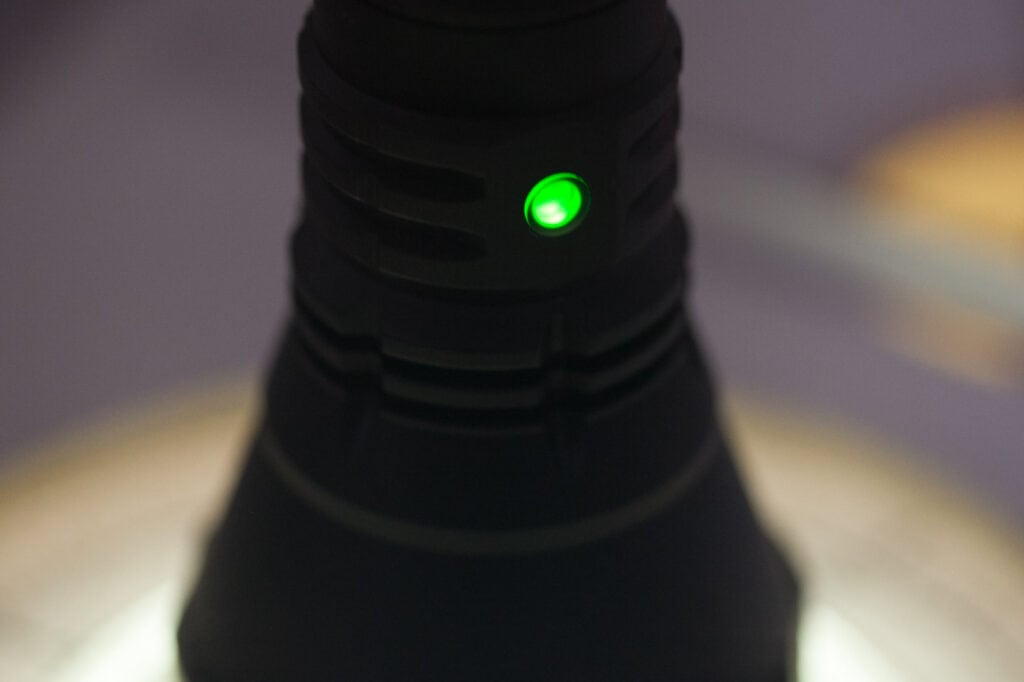
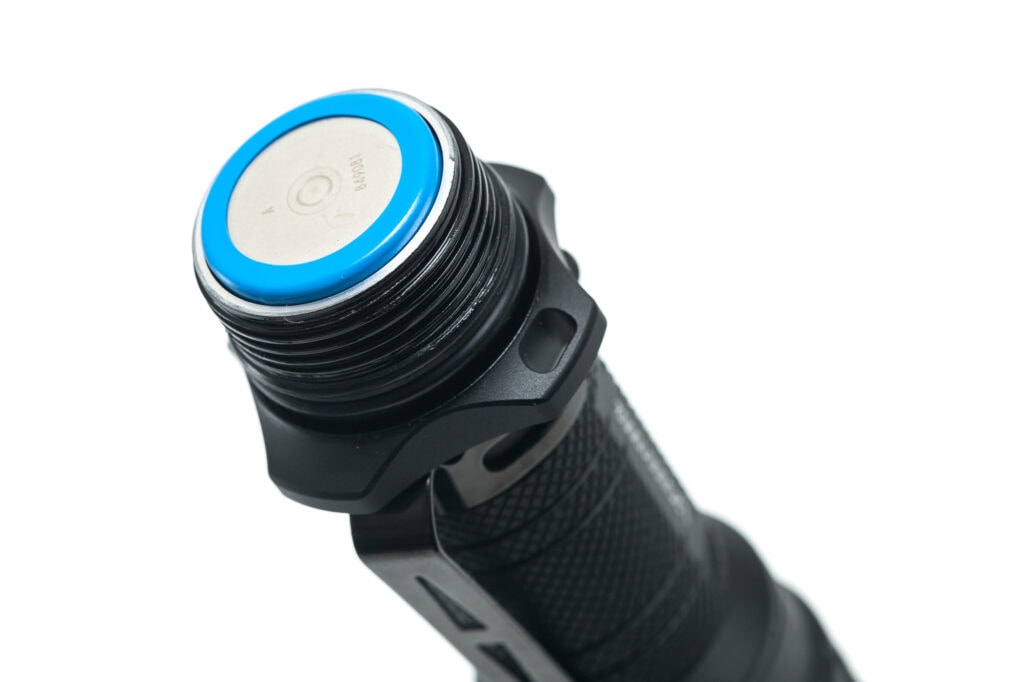
NlightD L1 performance test
Lumen measurements:
The output measurements in this review are based on my homemade integrating spheres, each equipped with an Extech SDL400 Lux Meter. For consistency and accuracy, a calibration light (Convoy S2+ with 249lm and a Convoy S2+ with 261lm) is measured prior to each set of lumen measurements.
For high-output lights, one of the lux meters uses an ND camera filter to prevent the lux meter to max out. This is either the Kenko PRO1D ND16 up till about 80,000 lumens or Gobe ND32 for anything above.
All of my readings were taken from a fully-charged 21700 battery that was included in the package.
The measurements were taken manually at turn on and 30 seconds. The 10-minute numbers are taken from the runtime graph.
| Mode | Amps | Specs | at turn on | 30 seconds | 10 minutes |
|---|---|---|---|---|---|
| Low | 0.65A | 100 lm | 117 lm | 112 lm | 102 lm |
| High | 3.54A | 500 lm | 546 lm | 513 lm | 448 lm |
I must say that the measurement at turn-on was actually the highest measurement I took within the first 2 seconds of turning on. It ramps up quickly before it starts dropping quickly. This is not visible in the runtime graph, because the timestamps in the graph are every 5 seconds. Too long to show this behavior.
It’s rated at 500 lumens, and at the 30-second measurement, it easily reached 500 lumens, so that’s a good thing.
NlightD L1 battery life and runtime graphs
The runtime tests were done in the 50cm home made integrating sphere, combined with the Extech SDL400 data logging Lux Meter.
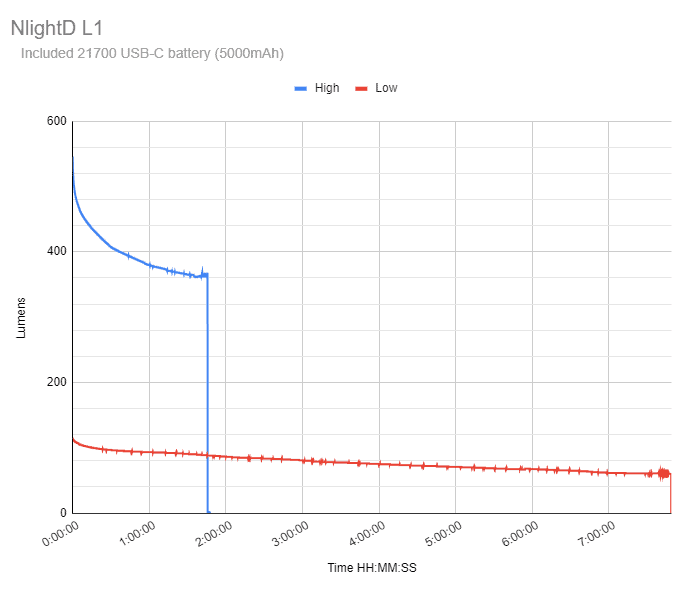
| Mode | Specified | Measured runtime (ANSI FL1) | Time till shut off |
|---|---|---|---|
| Low | 8h | 7h 48min | 7h 48min |
| High | 1h 45min | 1h 45min | 1h 45min |
The high runtime was spot on, at 1 hour and 45 minutes, and the Low mode was pretty close.
ANSI FL1 standards: The runtime is measured until the light drops to 10% of its initial output (30 seconds after turning it on). This does not mean that the flashlight is not usable anymore. The last column shows how long the light actually works till it shuts off. If there is a + symbol, it means that the test was stopped at that particular point, but the light was actually still running. This happens on certain occasions, with certain drivers, firmware, or batteries.
NlightD L1 Peak beam intensity and beam distance measurements
Measurements were taken outdoors at 20 and 30 meters, with a Hagner E4-X Lux Meter. The measurement was taken 30 seconds after turn on, as per ANSI FL1 standards.
| Mode | Specs | Measured | Meters | Yards | Miles |
|---|---|---|---|---|---|
| Low | 319,225 cd | 440,000 | 1,327 | 1,451 yd | 0.82 |
| High | 1,449,616 cd | 1,940,000 cd | 2,786 m | 3,046 yd | 1.73 miles |
| High (30 meters) | 1,449,616 cd | 1,935,000 cd | 2,782 m | 3,043 yd | 1.73 miles |
Distances in yards and meters are rounded numbers.
Extra info: Peak beam distance according to ANSI FL1 standards: The calculated value of distance in meters at which the flashlight produces a light intensity of 0.25 lux. (0.25 lux is about the brightness of a full moon shining on an object).
NlightD L1 vs Acebeam W30
Since this is the unofficial successor of the W30, here’s the comparison between the 2.
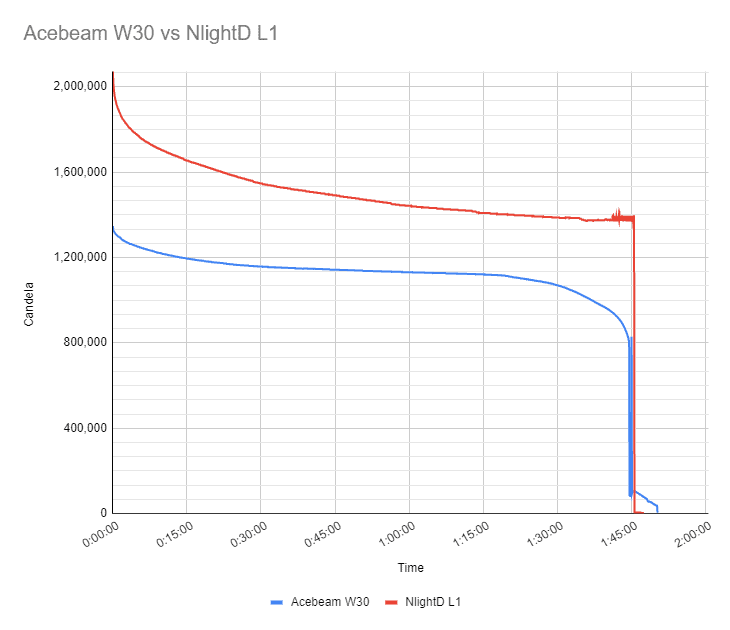
Candela comparison: best single-cell large head LEP flashlights
A list of the best single-cell LEP flashlights with large heads we reviewed: These numbers are NOT from the specifications but are measured by our reviewers. They include all single-cell LEP flashlights with large heard (+-60mm and above). The numbers include the measurement in lumens (lm), measure candela (cd), and calculated distance in meters, and yards. These numbers are all measured 30 seconds after turning on.
| Flashlight (click for review) | @30sec (lm) | Candela (cd) | Meters | Yards |
|---|---|---|---|---|
| Acebeam W30 | 498 | 1,312,000 | 2291 | 2505 |
| Acebeam W35 | 733 | 1,892,000 | 2751 | 3009 |
| Amutorch BT60 | 316 | 1,644,000 | 2564 | 2804 |
| Astrolux WP2 | 303 | 1,248,000 | 2234 | 2443 |
| Astrolux WP3 | 445 | 2,412,000 | 3106 | 3397 |
| FireFlyLite LEP01 | 391 | 816,000 | 1807 | 1976 |
| Jetbeam M1X WP-RX | 491 | 2,280,000 | 3020 | 3302 |
| Lumintop Thor 3 | 311 | 1,728,000 | 2629 | 2875 |
| Maxtoch L2KS | 442 | 2,308,000 | 3038 | 3323 |
| Nextorch T20L | 975 | 1,284,000 | 2266 | 2478 |
| NlightD L1 | 513 | 1,940,000 | 2786 | 3046 |
| Weltool W4 | 450 | 2,184,000 | 2956 | 3232 |
| Weltool W4 PRO | 550 | 2,808,000 | 3351 | 3665 |
And below is an interactive throw comparison graph (candela), between the best single-cell LEP flashlights with large heads. Hover your mouse over the interactive graph below to see the details of each specific light.
(tip: hold your mobile phone horizontally to see the full graph). Or visit the full interactive graph here.
The next graph shows the same graph, but then focusing on the first 60 minutes of their runtimes. Or view the full 60min interactive graph here.
Beamshots
For the tower beamshots (450 meters), I used a Canon EOS 5D mk2 with a 100mm lens. Manual settings: ISO1600, 0.5sec, F4, 5000K
For the shed (65 meters) + reflective fence (200 meters) beamshots, I used a Canon EOS 5D Mk2 with a 50mm lens. Manual settings: ISO1600, 1/4sec, F4, 5000K
I compared the following flashlights:
- NlightD L1
- Acebeam W30
- Astolux WP3
- Nextorch T20L
- Weltool W4 PRO
- Jetbeam RRT M1X Raptor
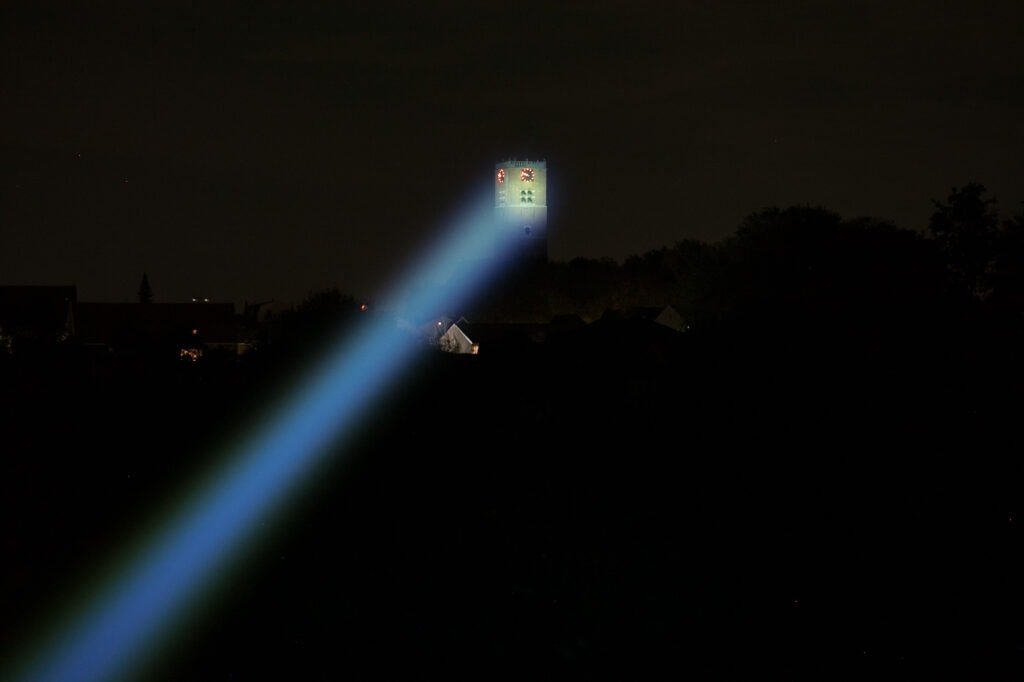
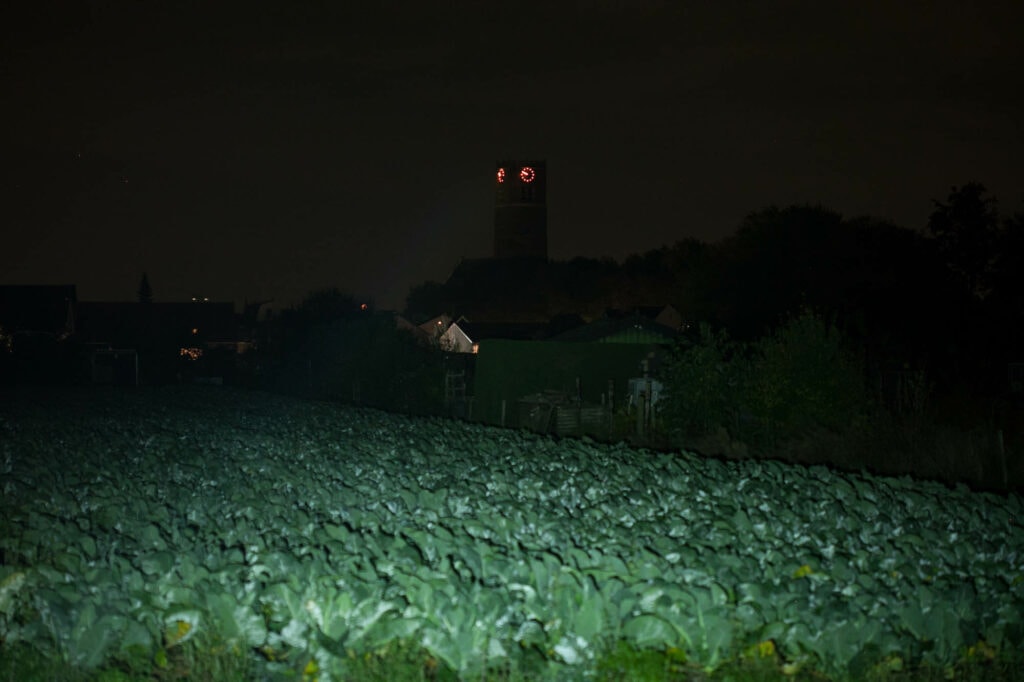
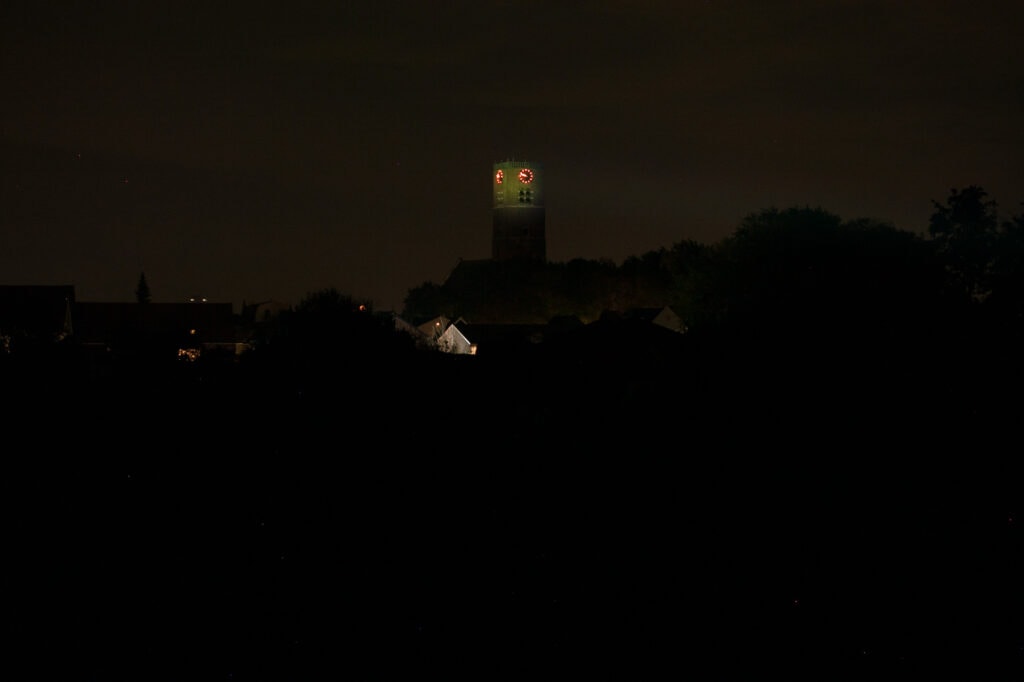
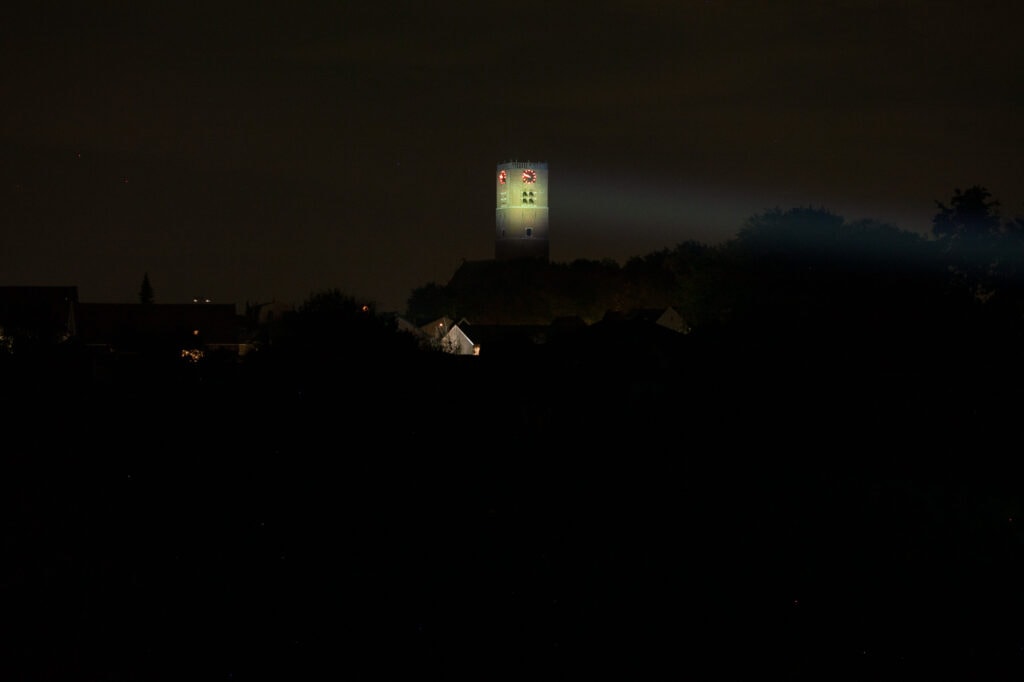
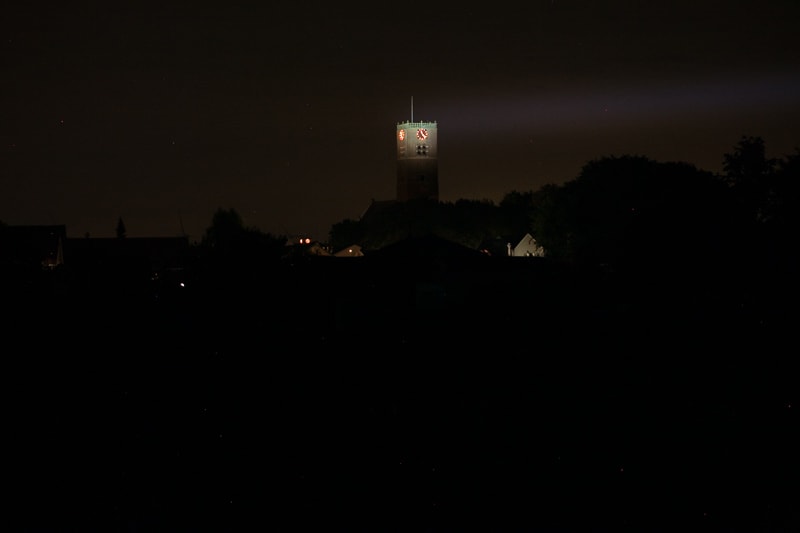
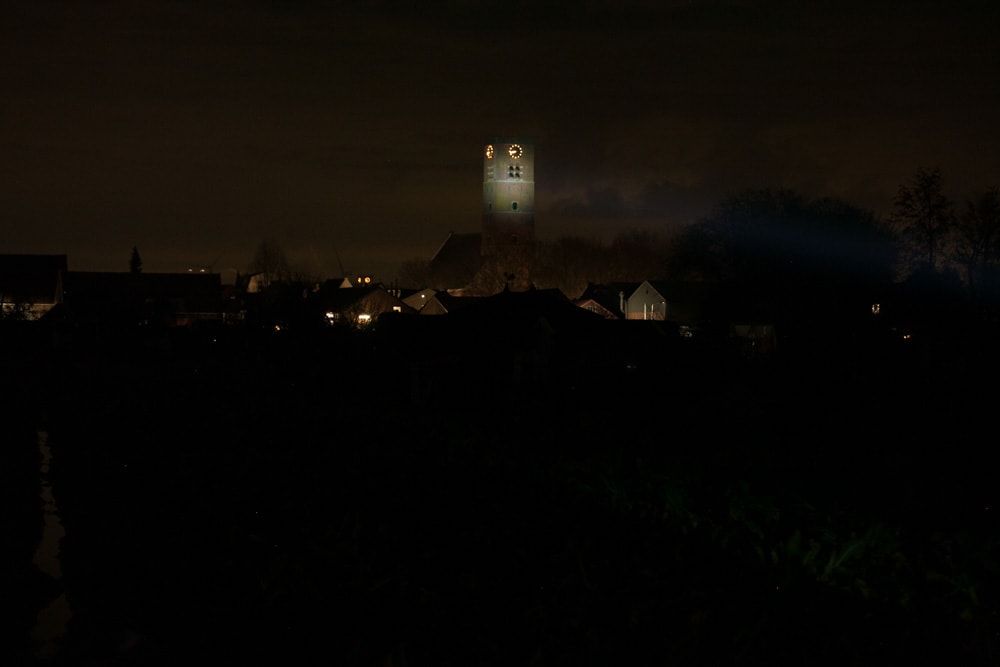
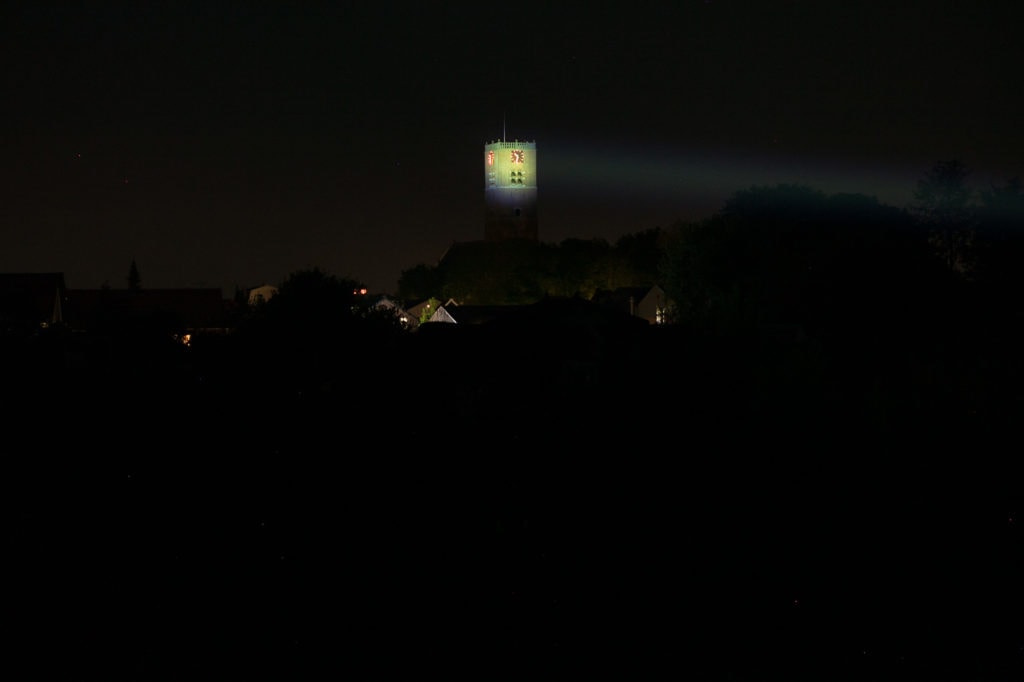
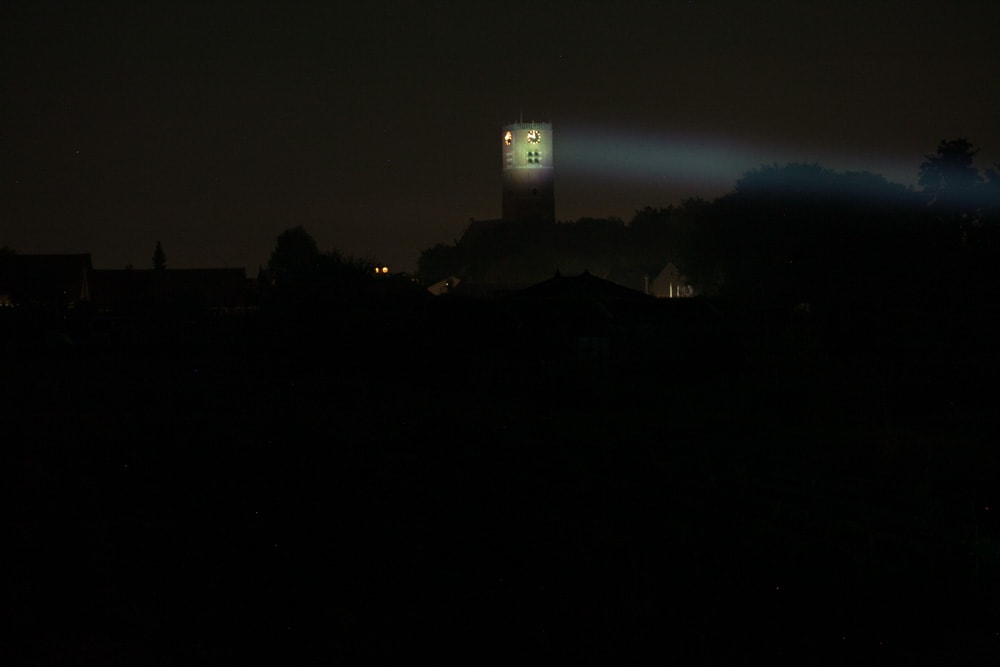
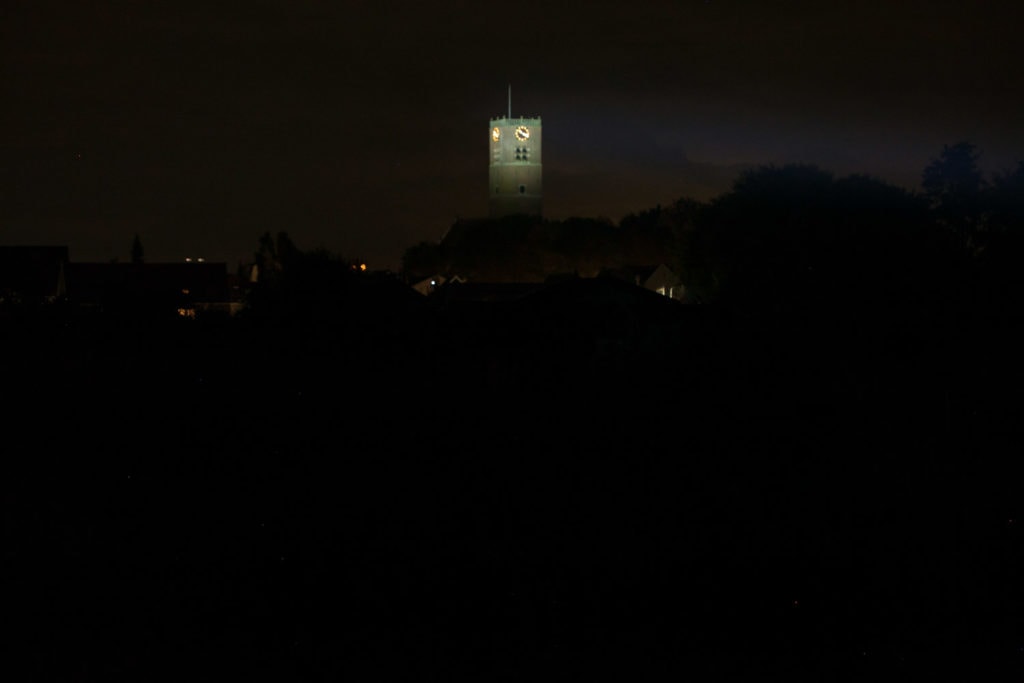
The shed is about 65 meters away. See the rainbow hotspot with the filter? Looks interesting.
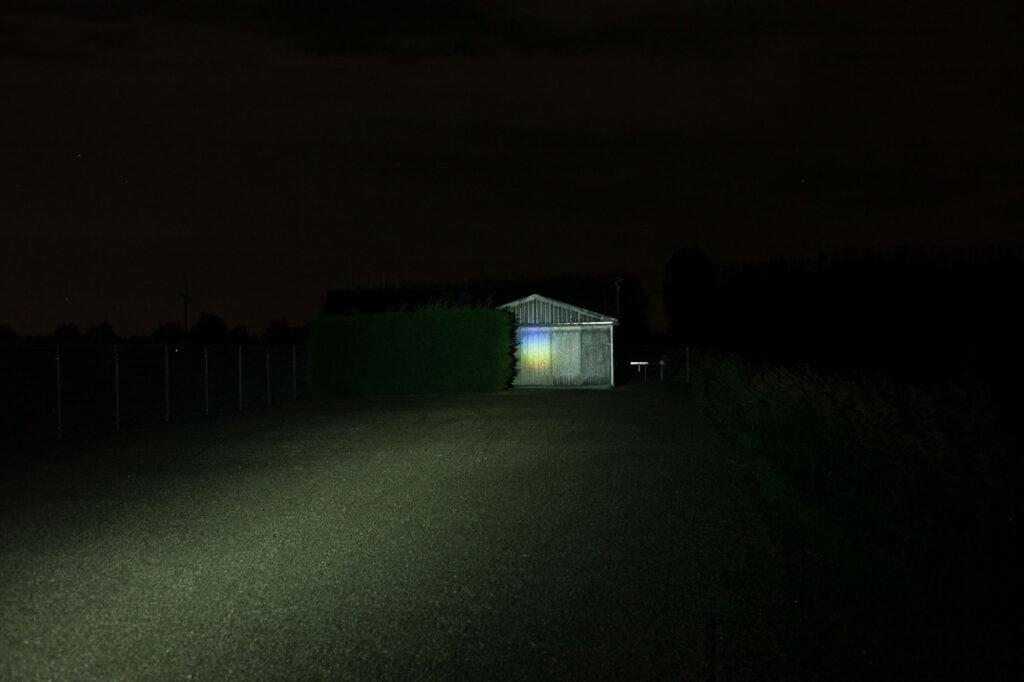
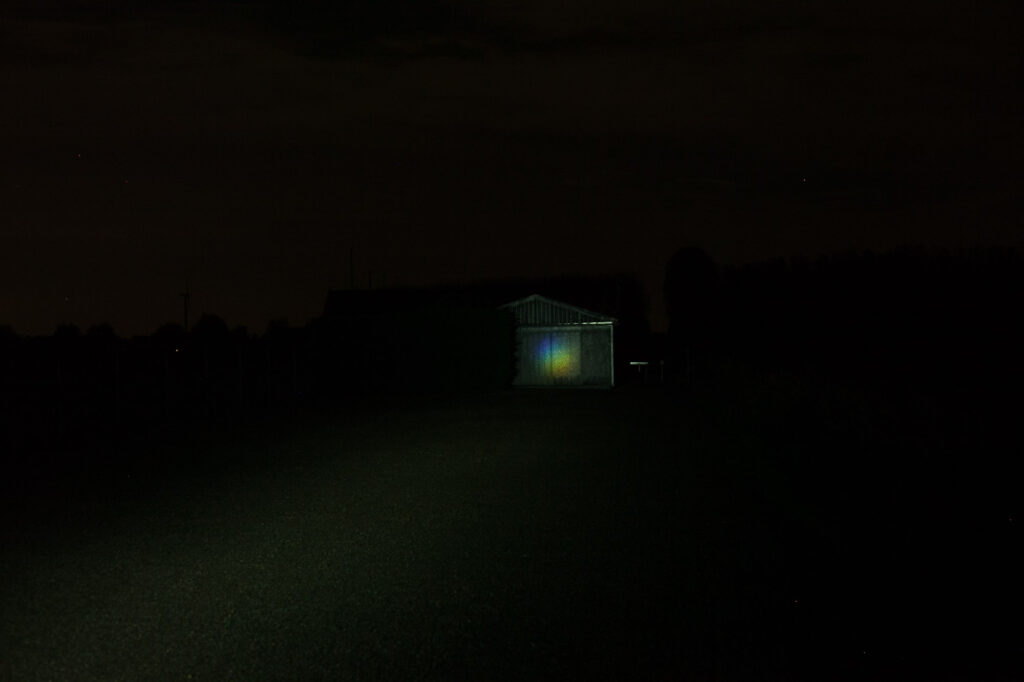
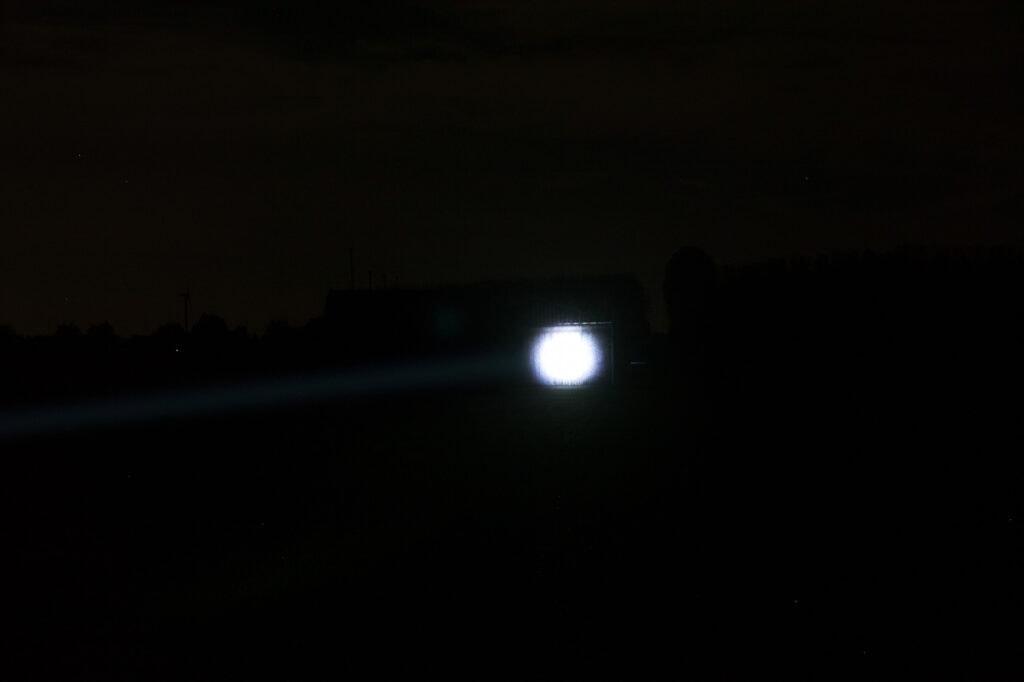
200 meters:
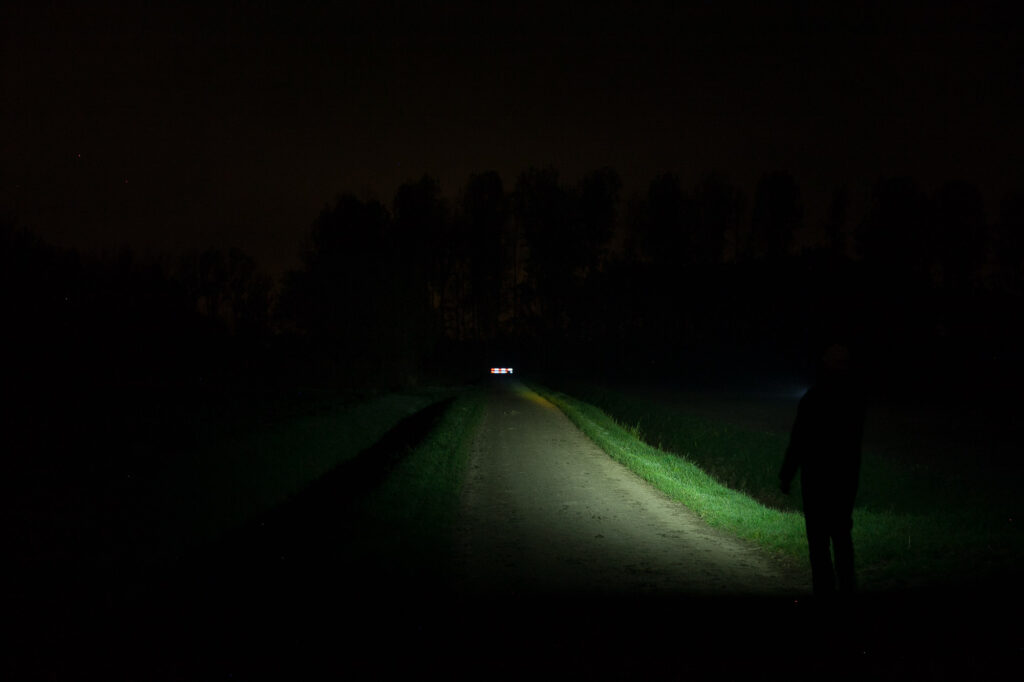
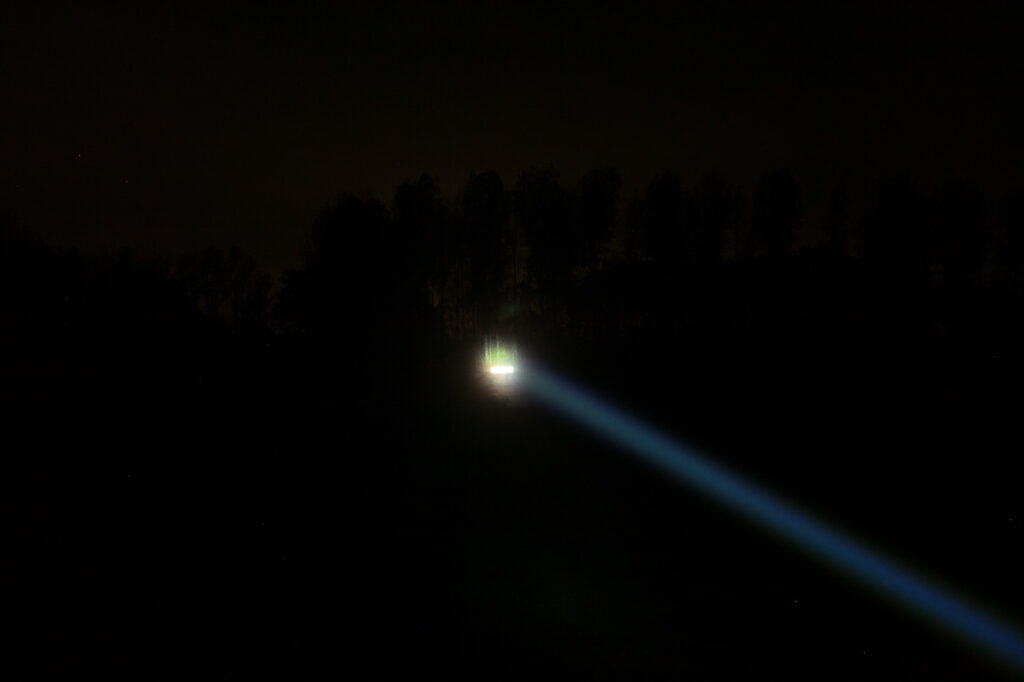
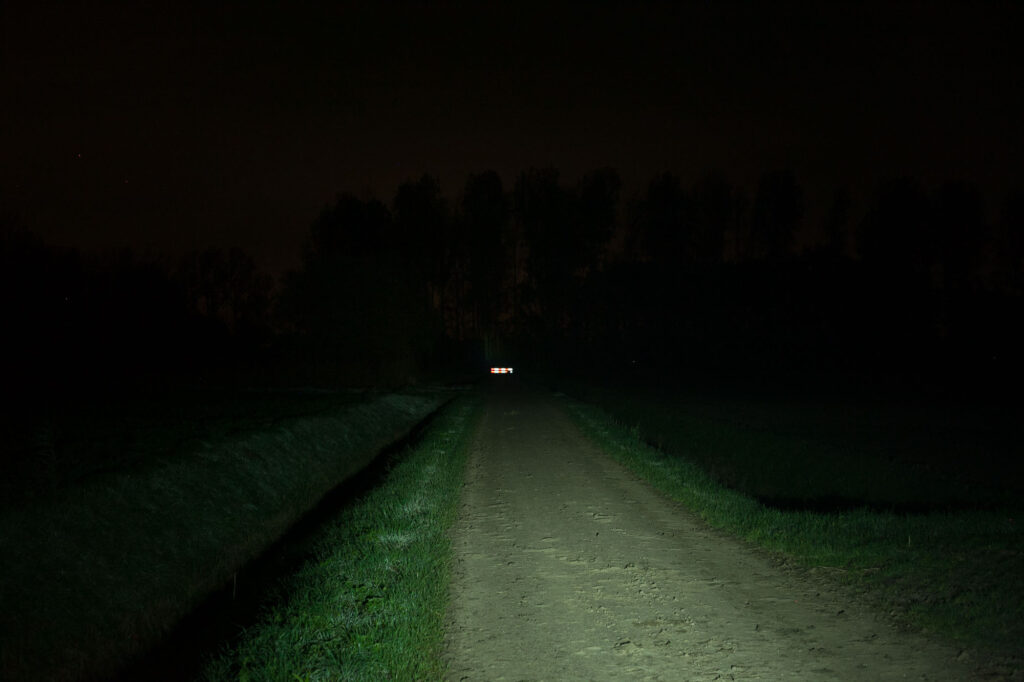
Disclaimer: This flashlight was sent to me for review at no cost by Nealsgadgets. I have not been paid to review, nor have I been holding back on problems or defects.
Final Verdict
Pros
- Throws very far, much better than advertised
- Has a simple UI with only 2 well-spaced modes
- No mode memory
- Includes frosted filter for close-up work (gives a floody beam)
- Has built-in tripod mount
- 2 o-rings on each side of the battery tube for maximum waterproof
Cons
- My pre-production sample starts in low, instead of high.
- Pocket clip doesn’t really fit this type of light
- Bezel is quite sharp
Explanation on star ratings:
1: Avoid: my phone flashlight would be a better choice – 2: Poor: significant defect or issues; almost unusable – 3: Average: some defects or issues; but still usable 4: Good: recommended (minor issues) – 5: Great: highly recommended
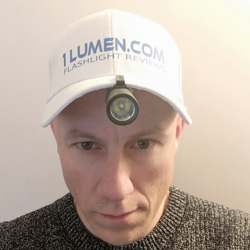
5 stars: ★★★★★
Neals has gotten a nice upgraded W30. With some very interesting features and good performance, this is a worthy upgrade from the Acebeam W30, which is impossible to come by anyway.
The simple UI with 2 modes, frosted lens, double o-rings, tripod mount, and included battery with USB-C port, makes this a very interesting offer.
It would have been nice if it topped the list of best throwers, but it doesn’t. It performs still very good, and with all the features, still is a great value for the money.
Buy NlightD L1 with our discount code
Use our exclusive 25% off coupon code: 1LumenLEP or 1Lumen711 for 15%
1lumen selects and reviews products personally. We may earn affiliate commissions through our links, which help support our testing.